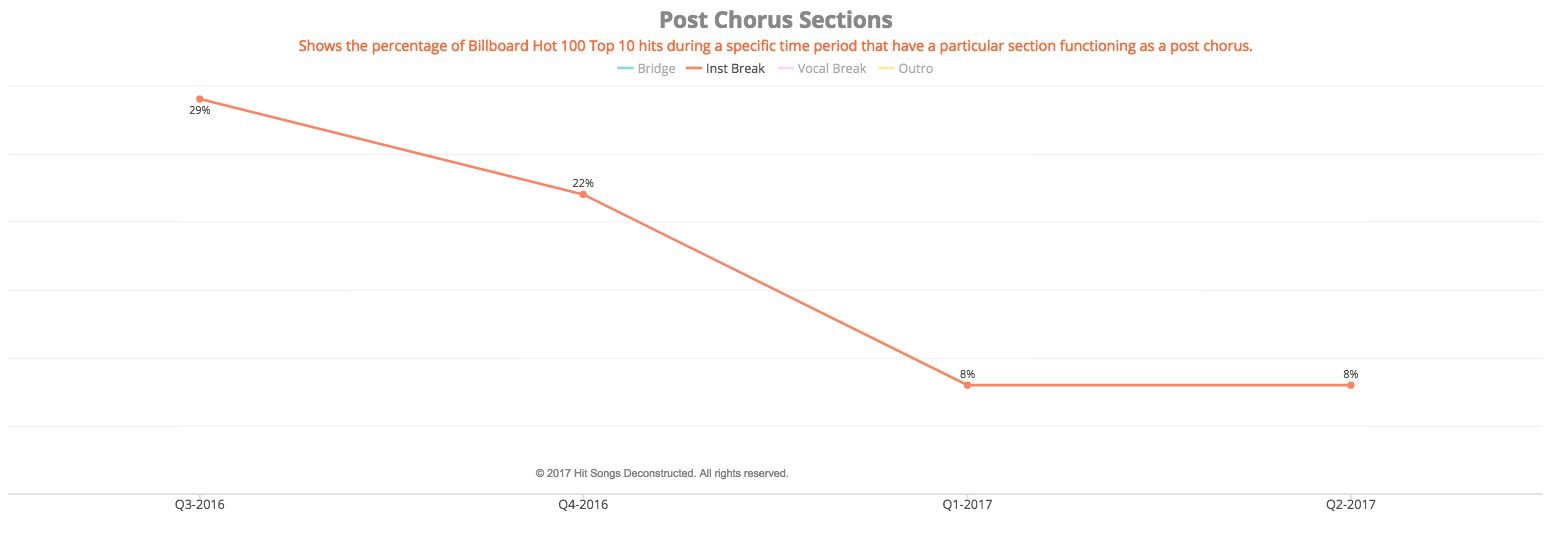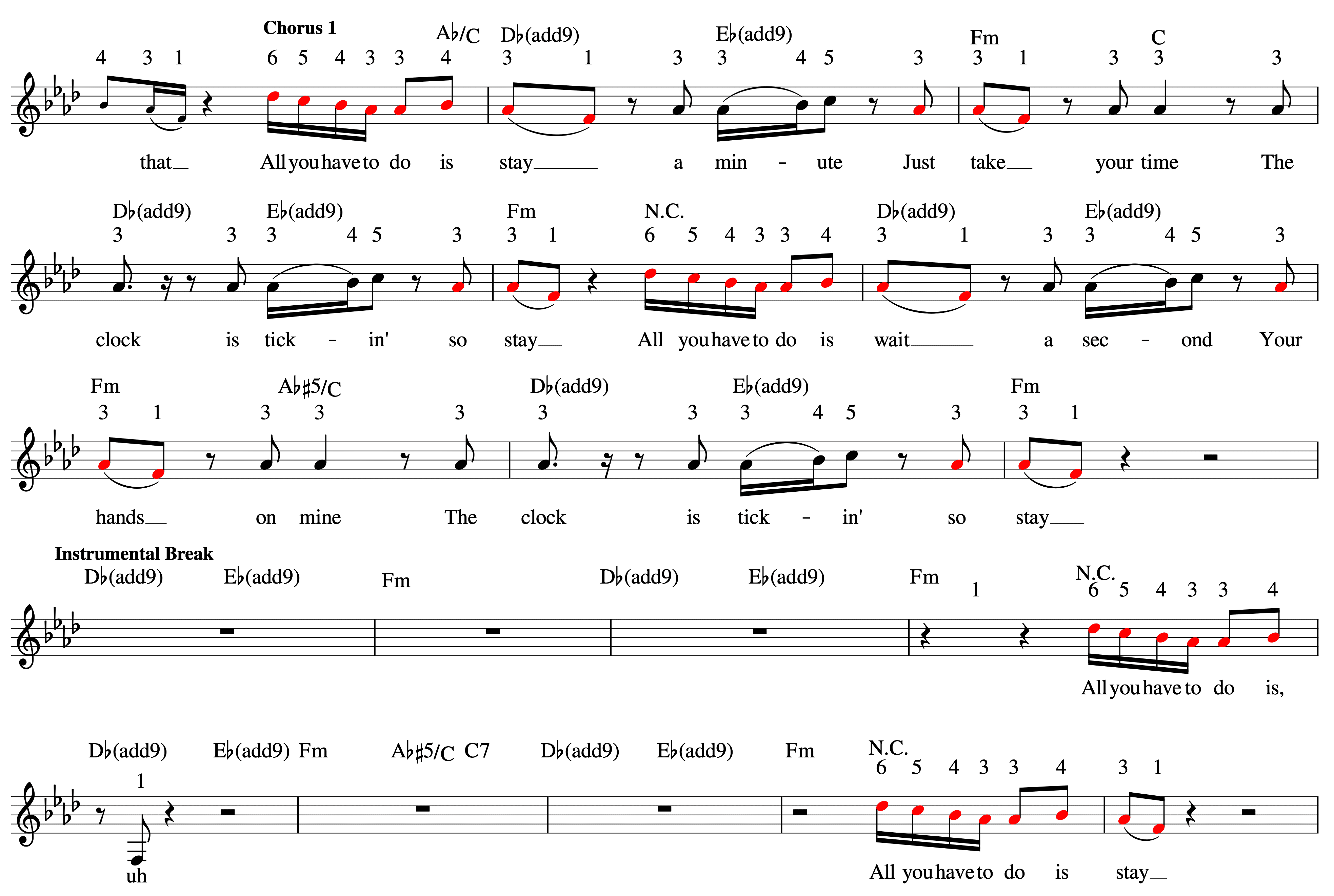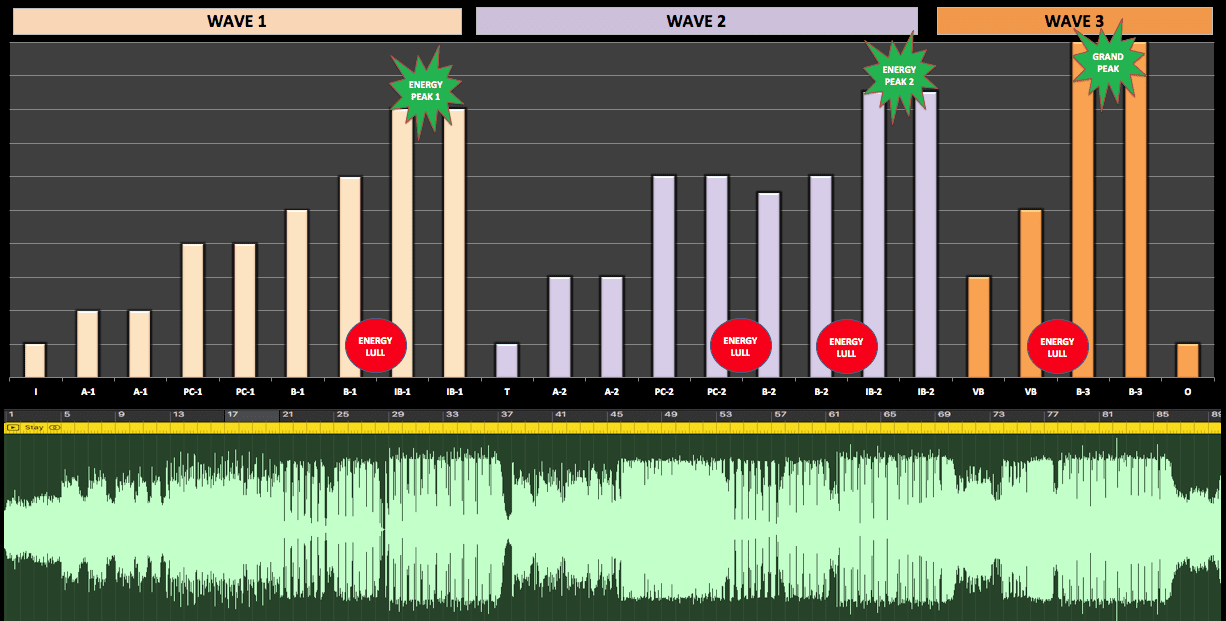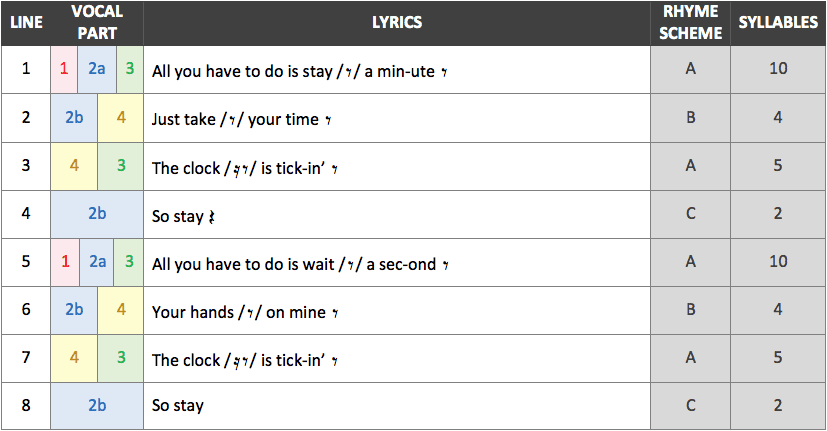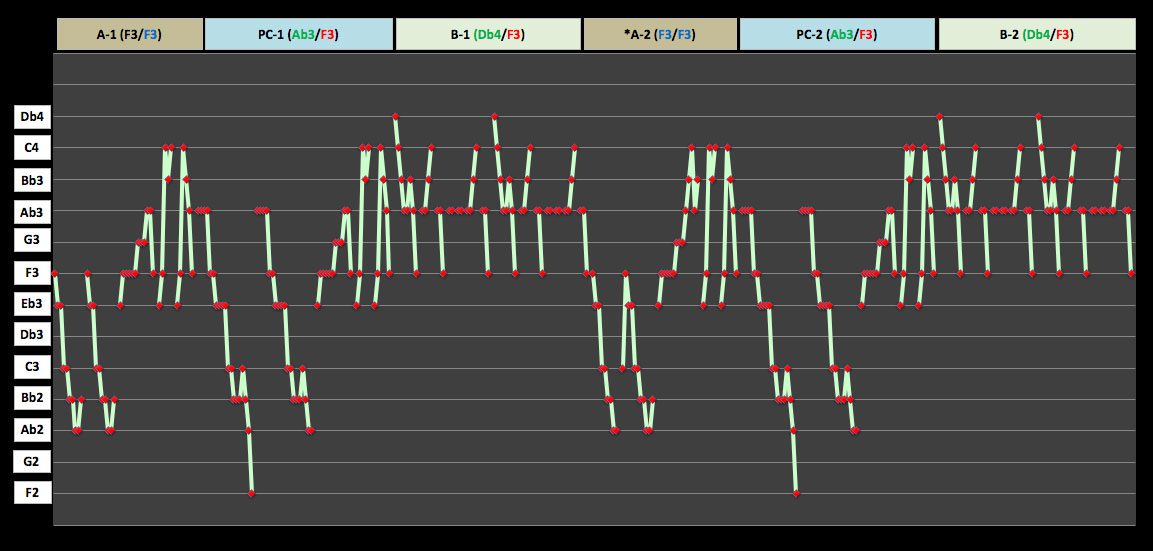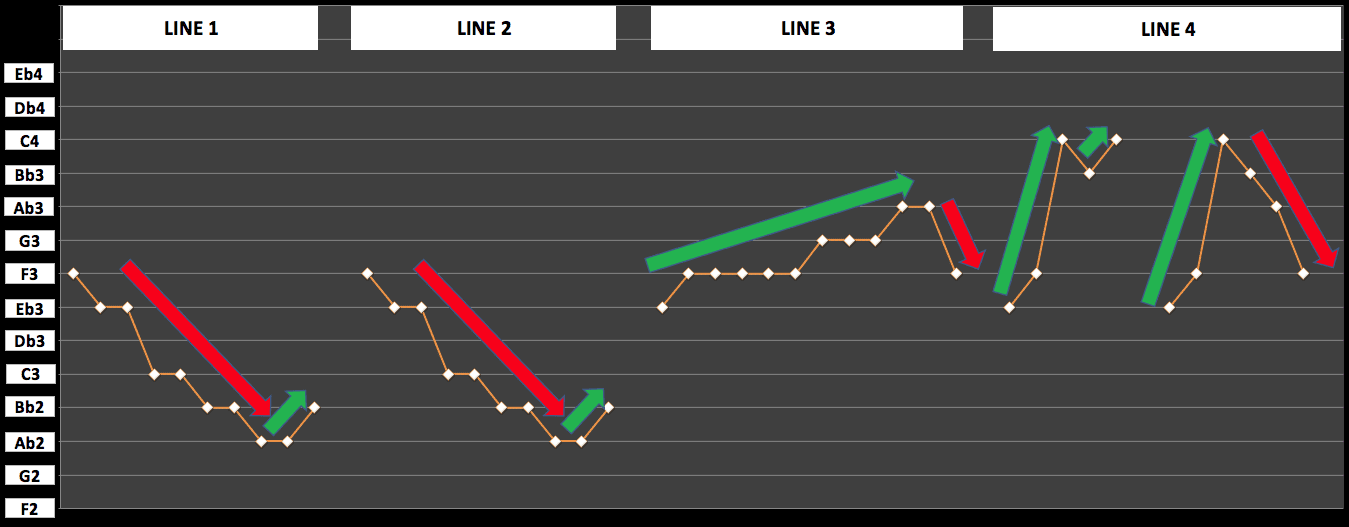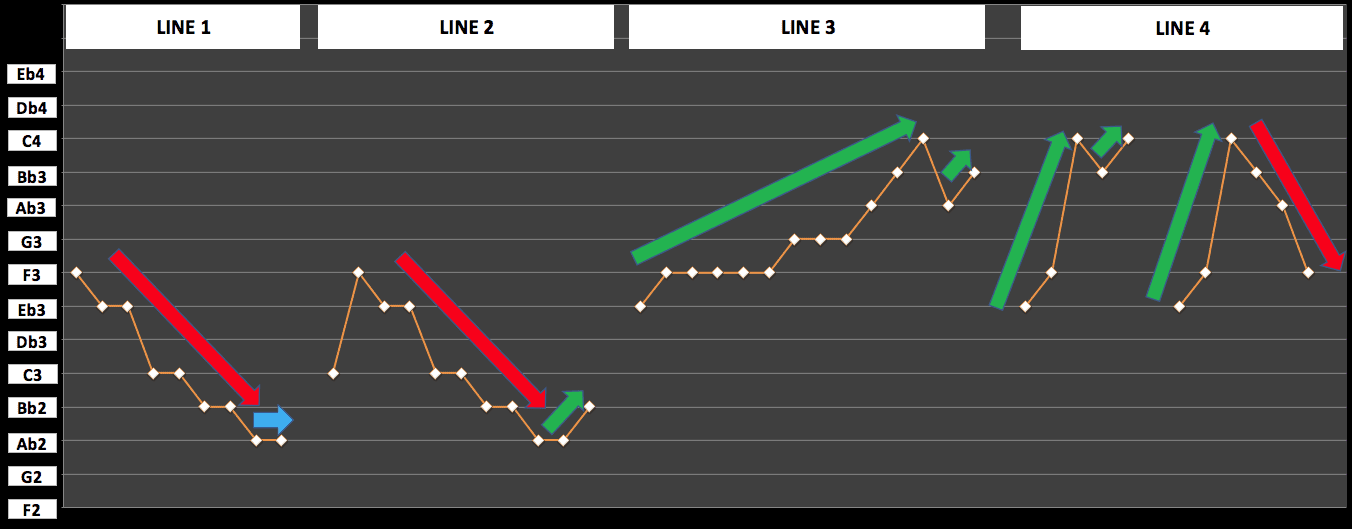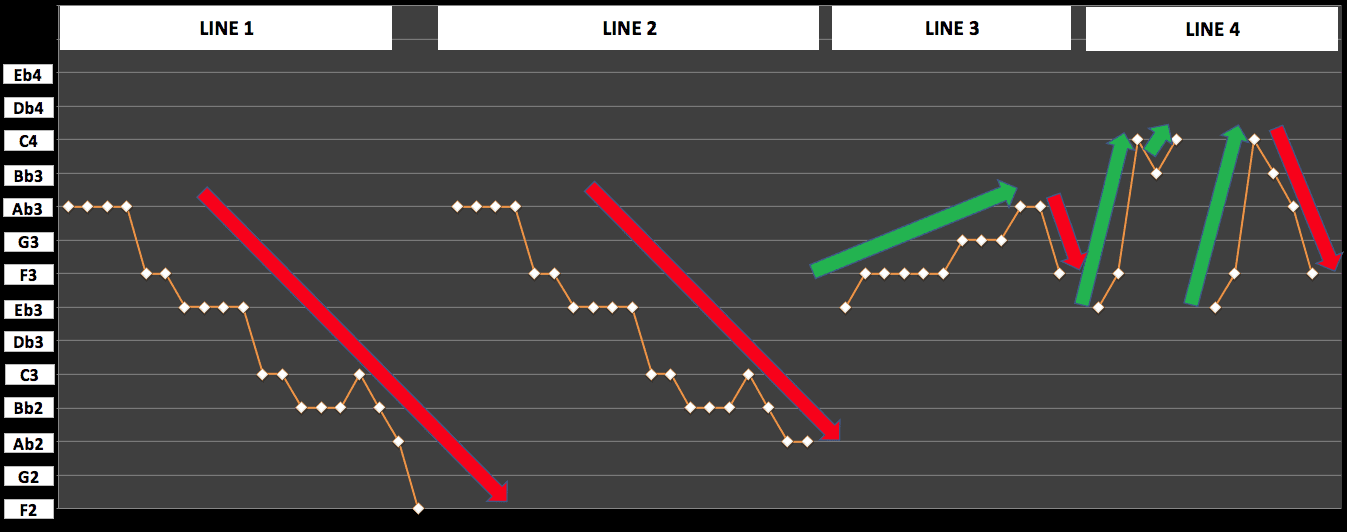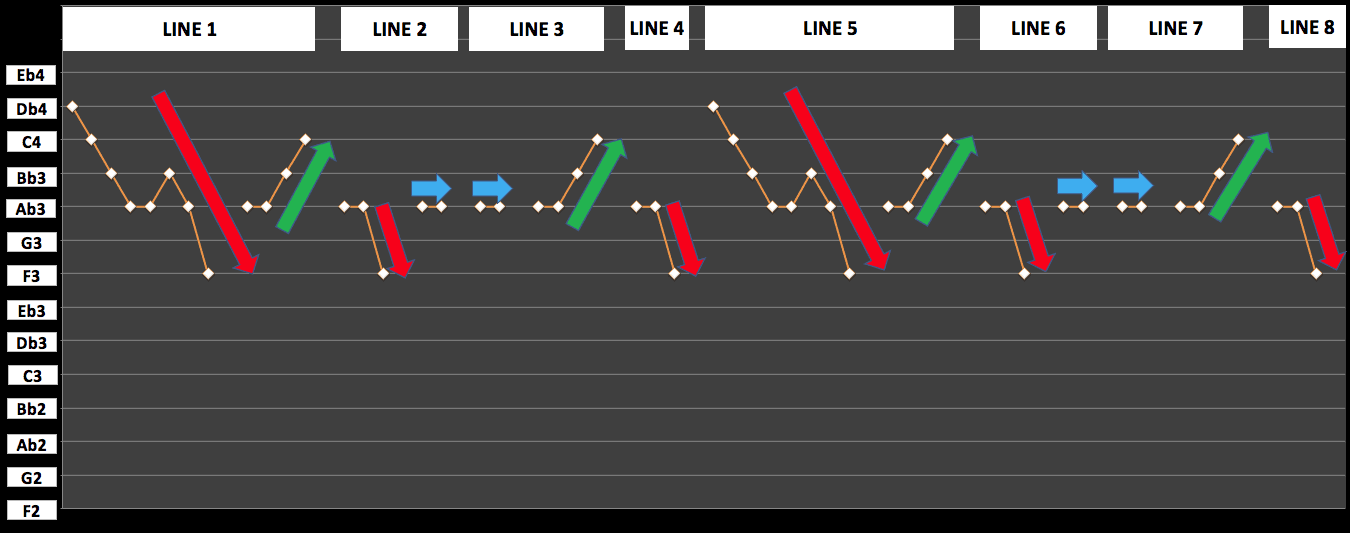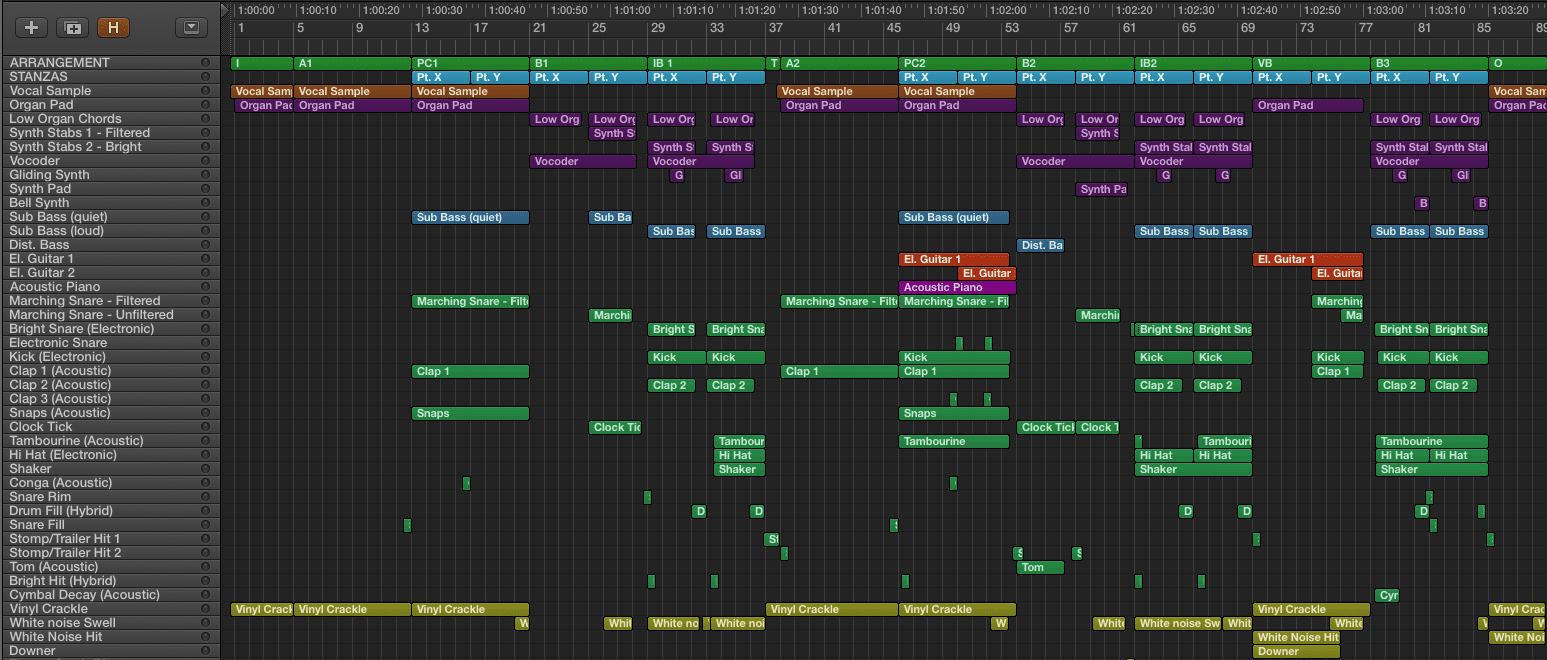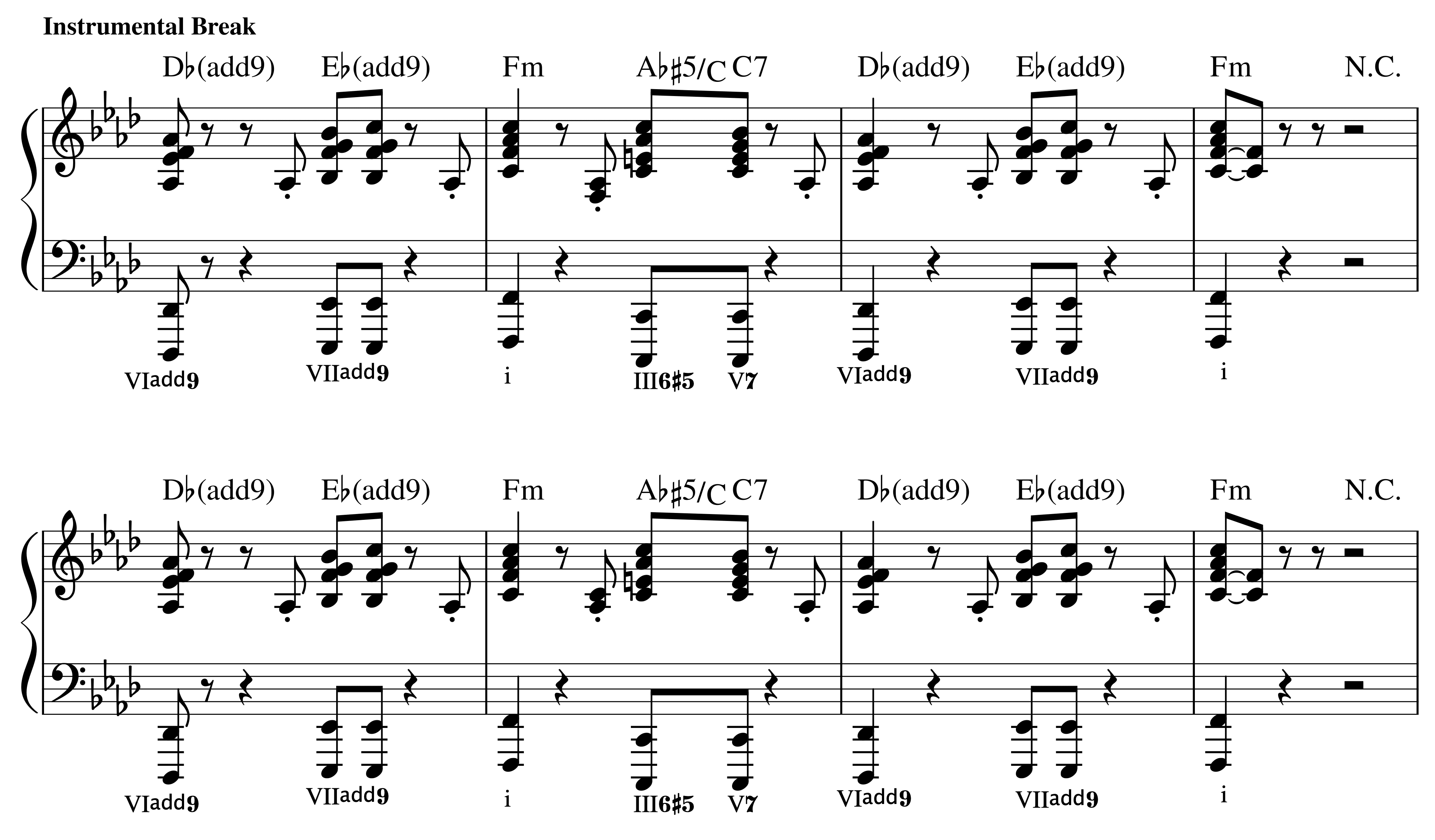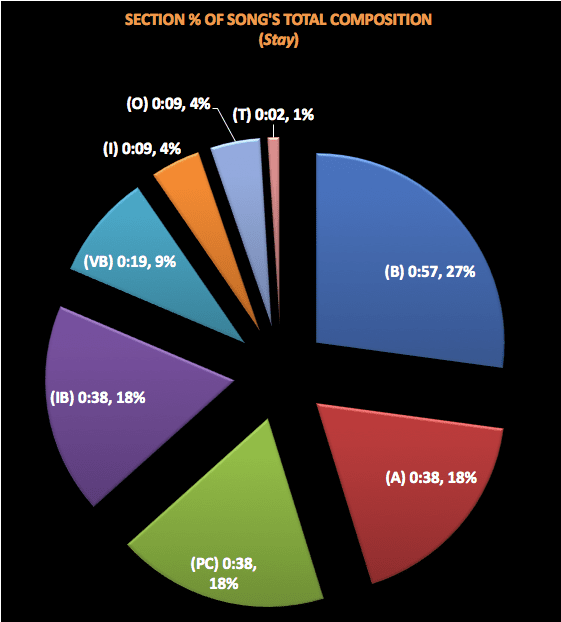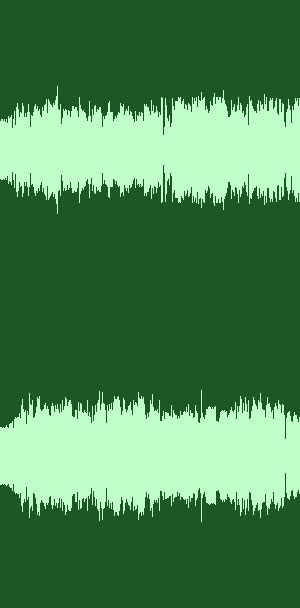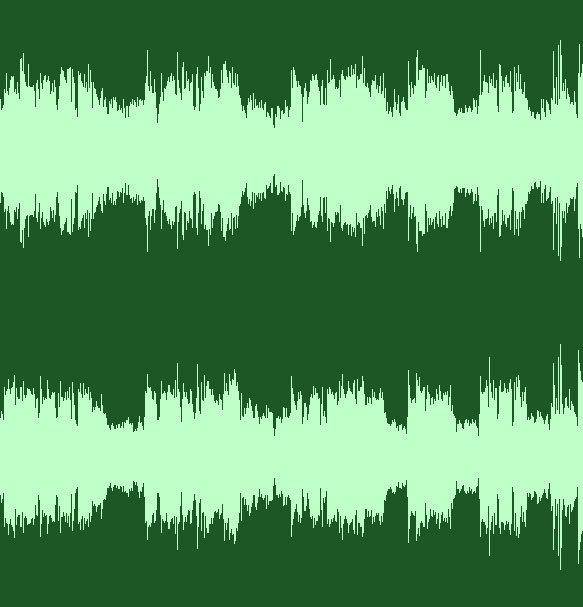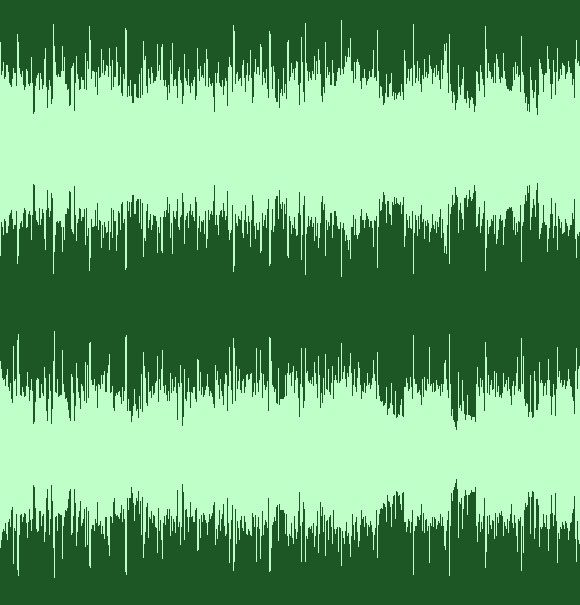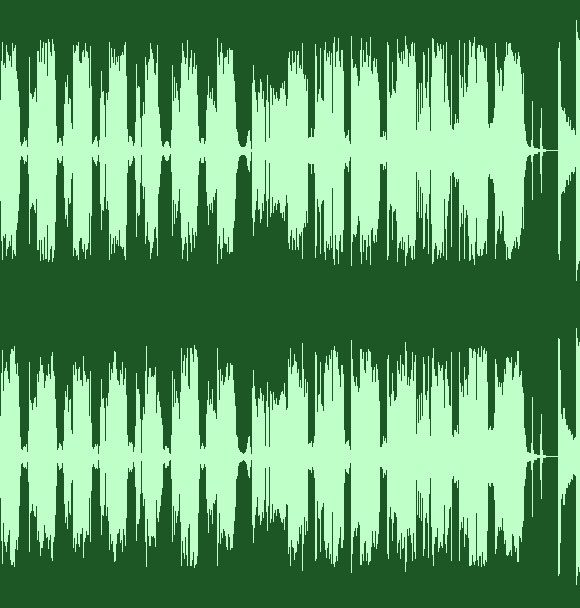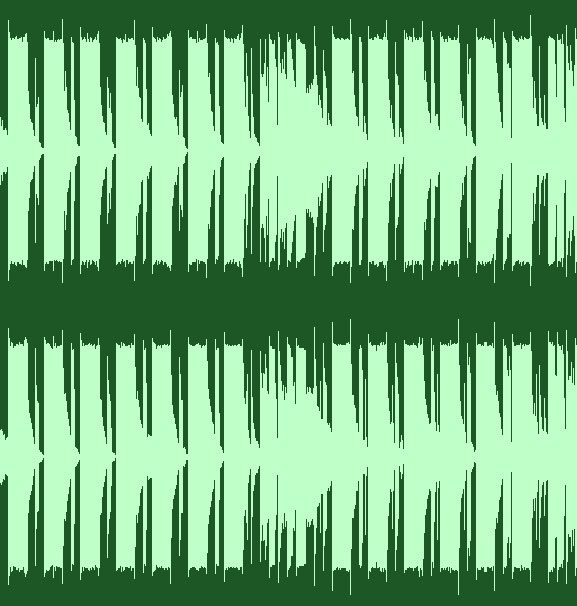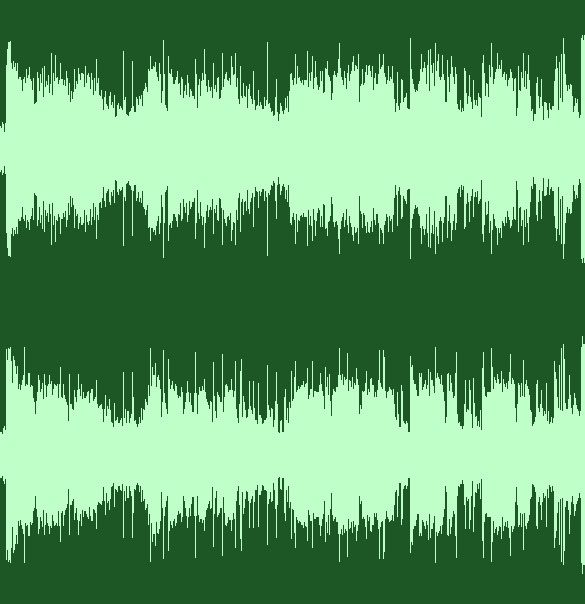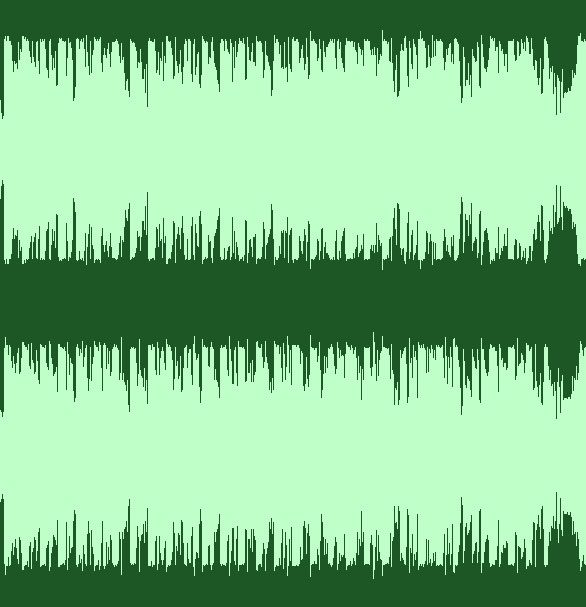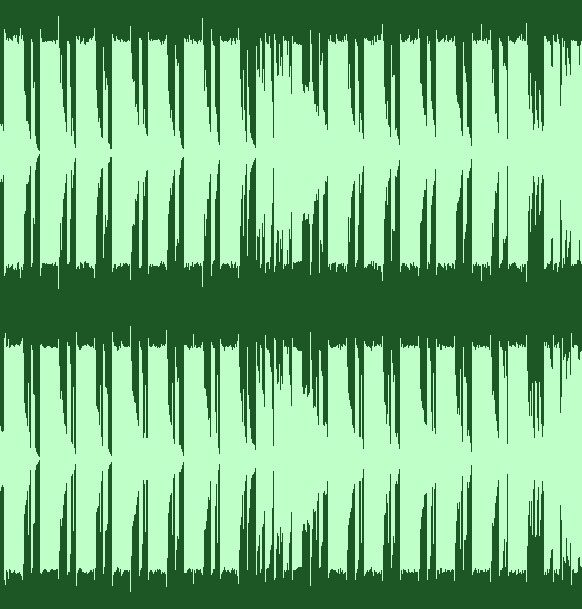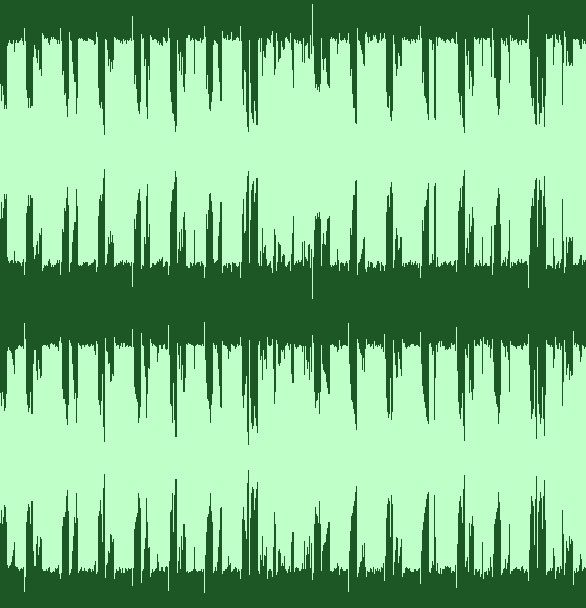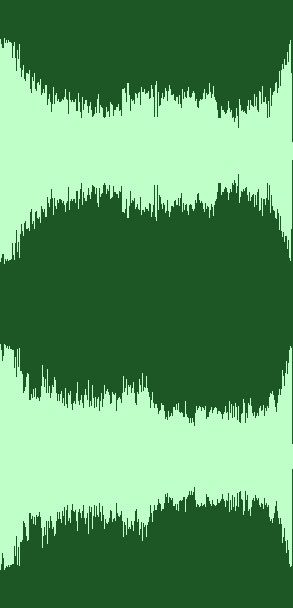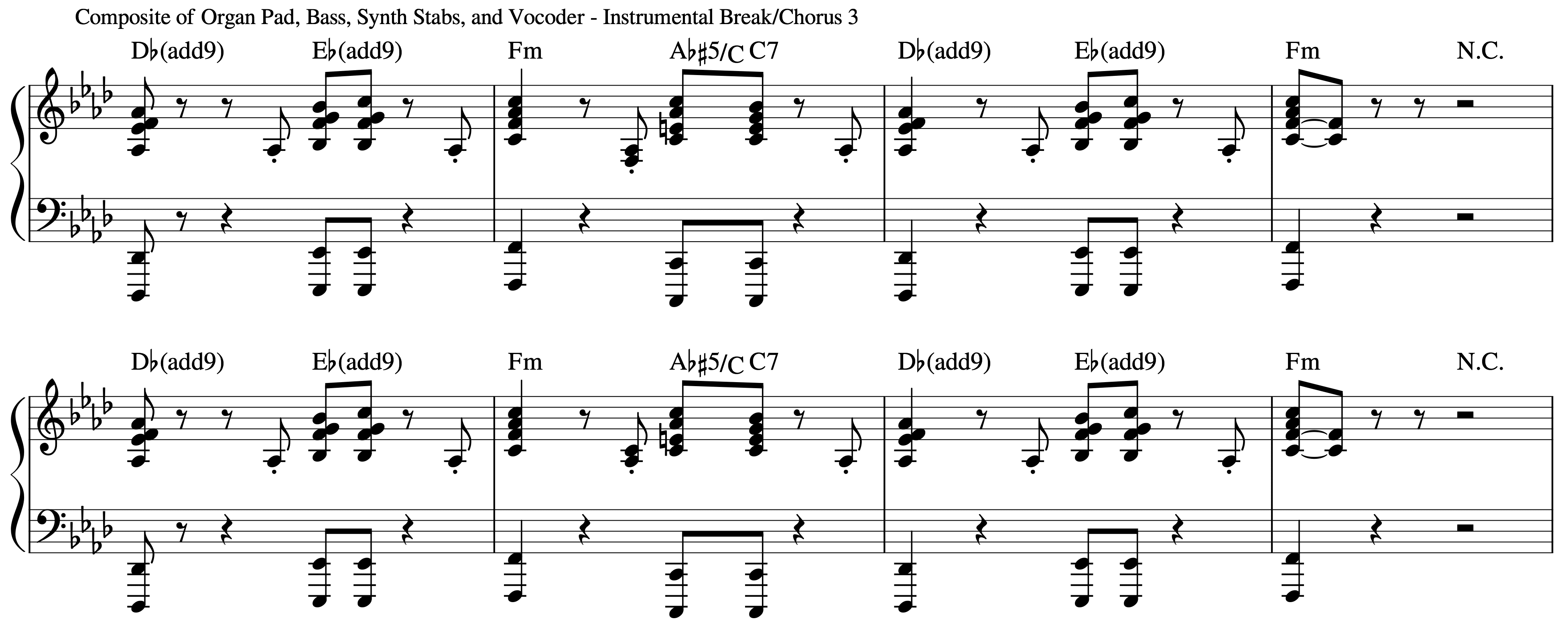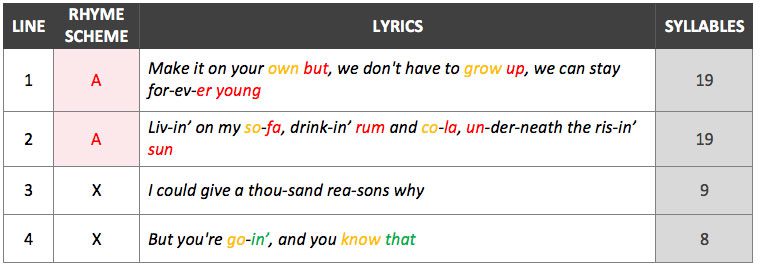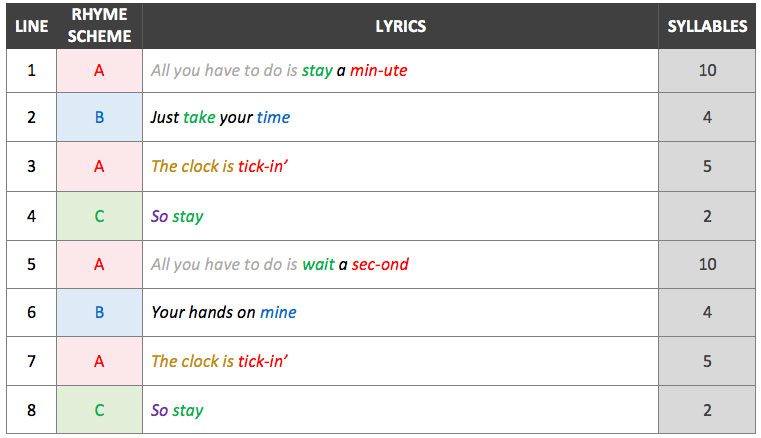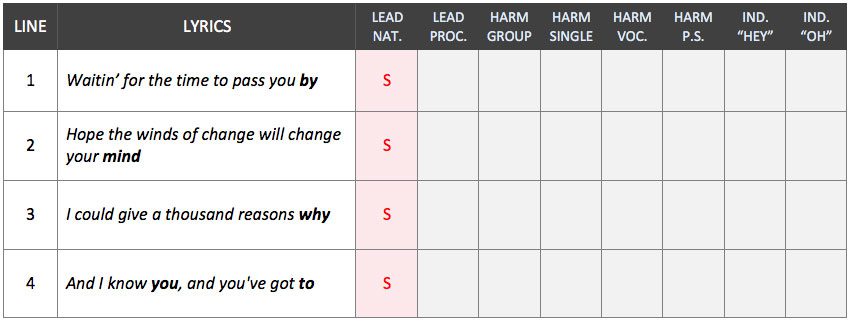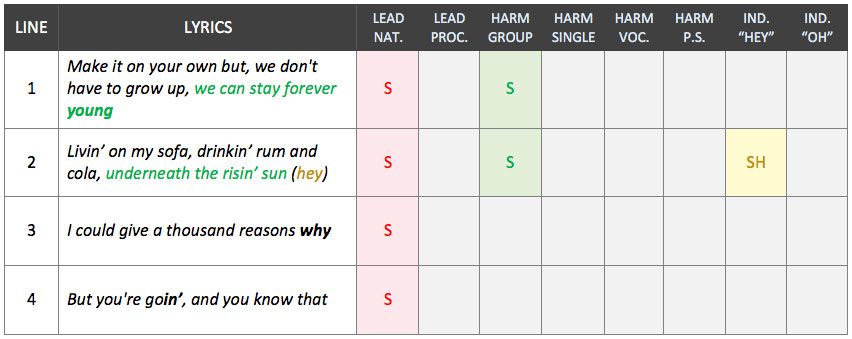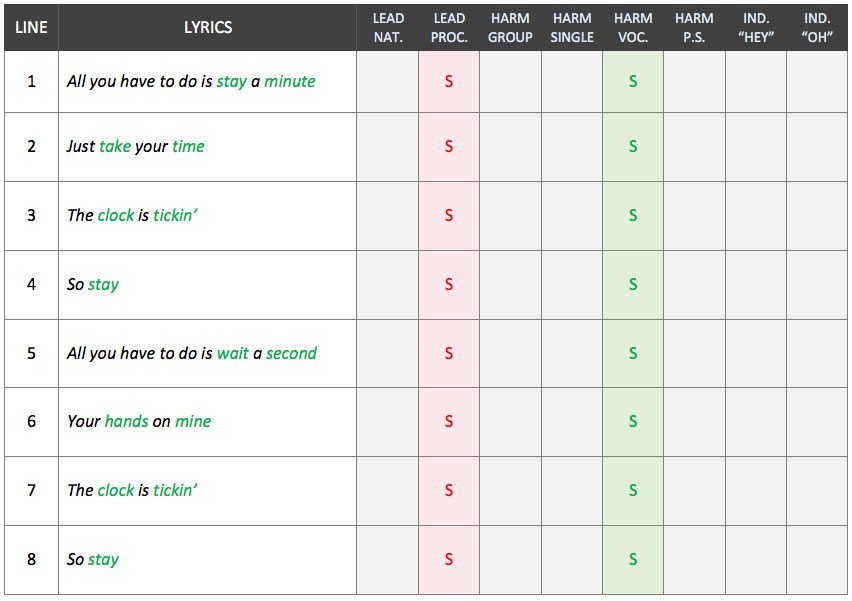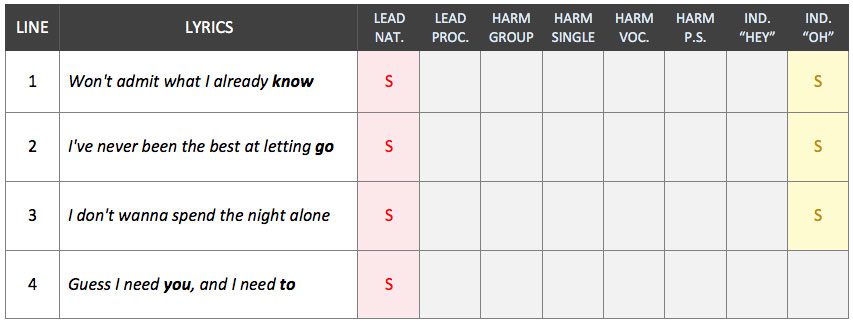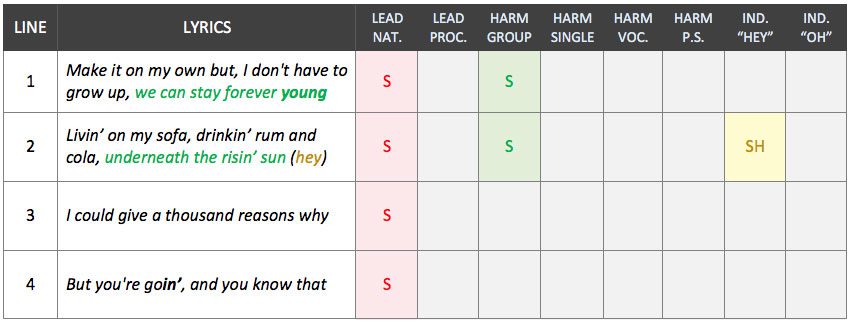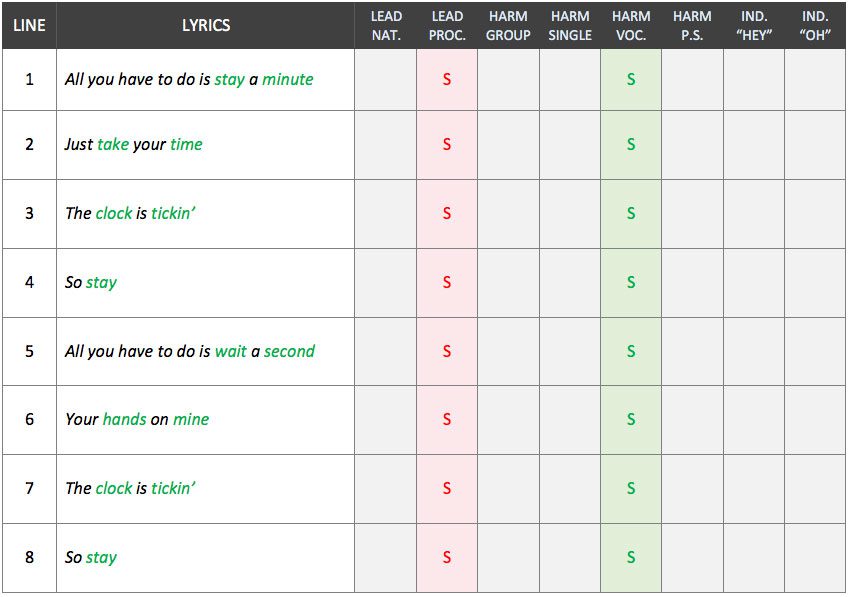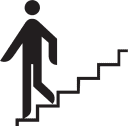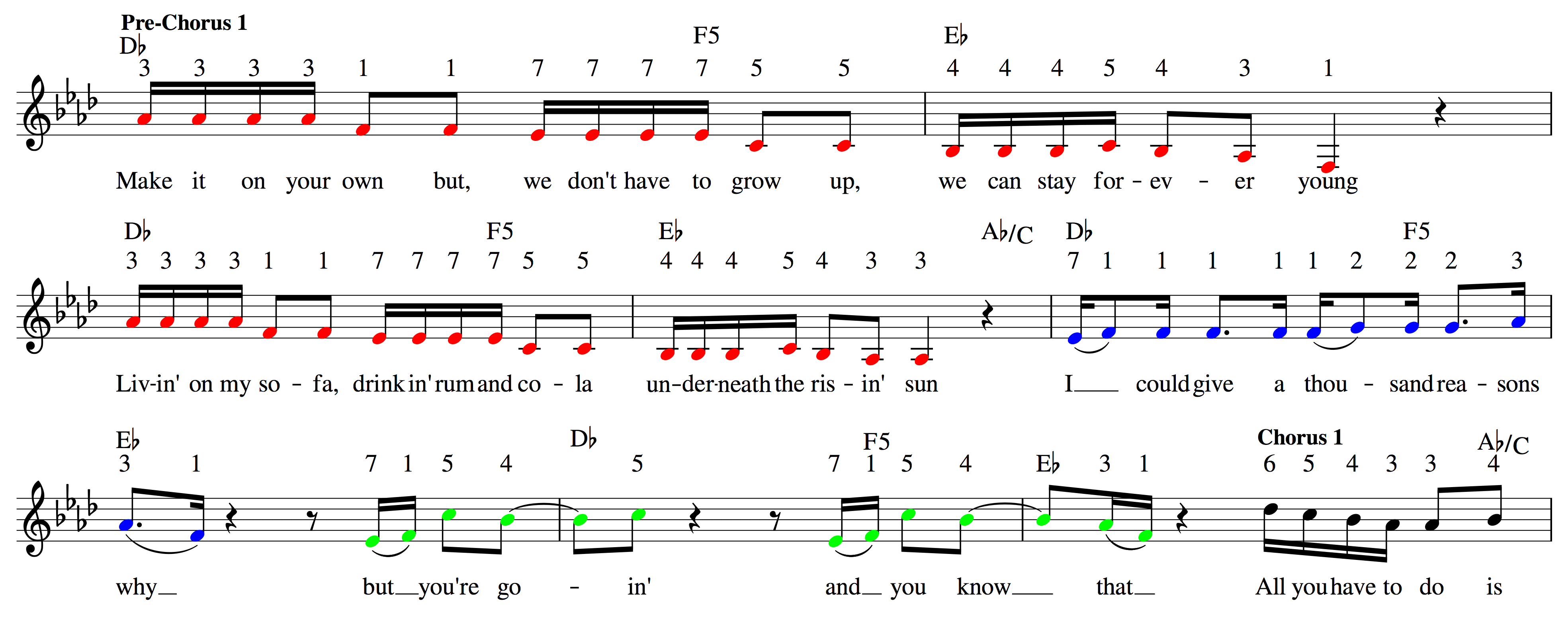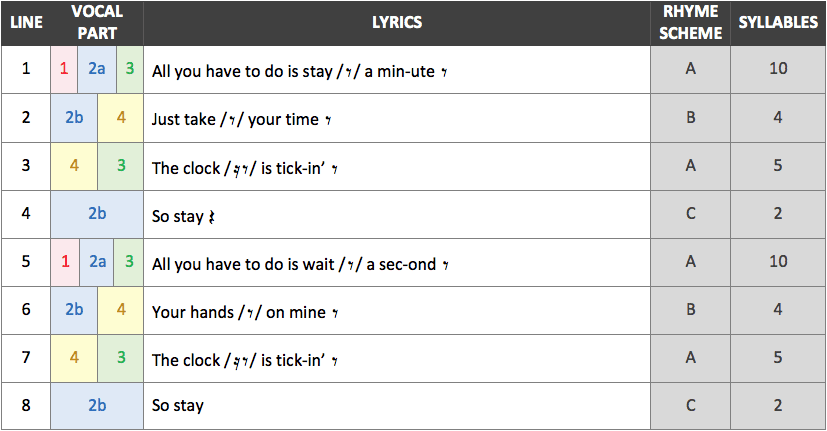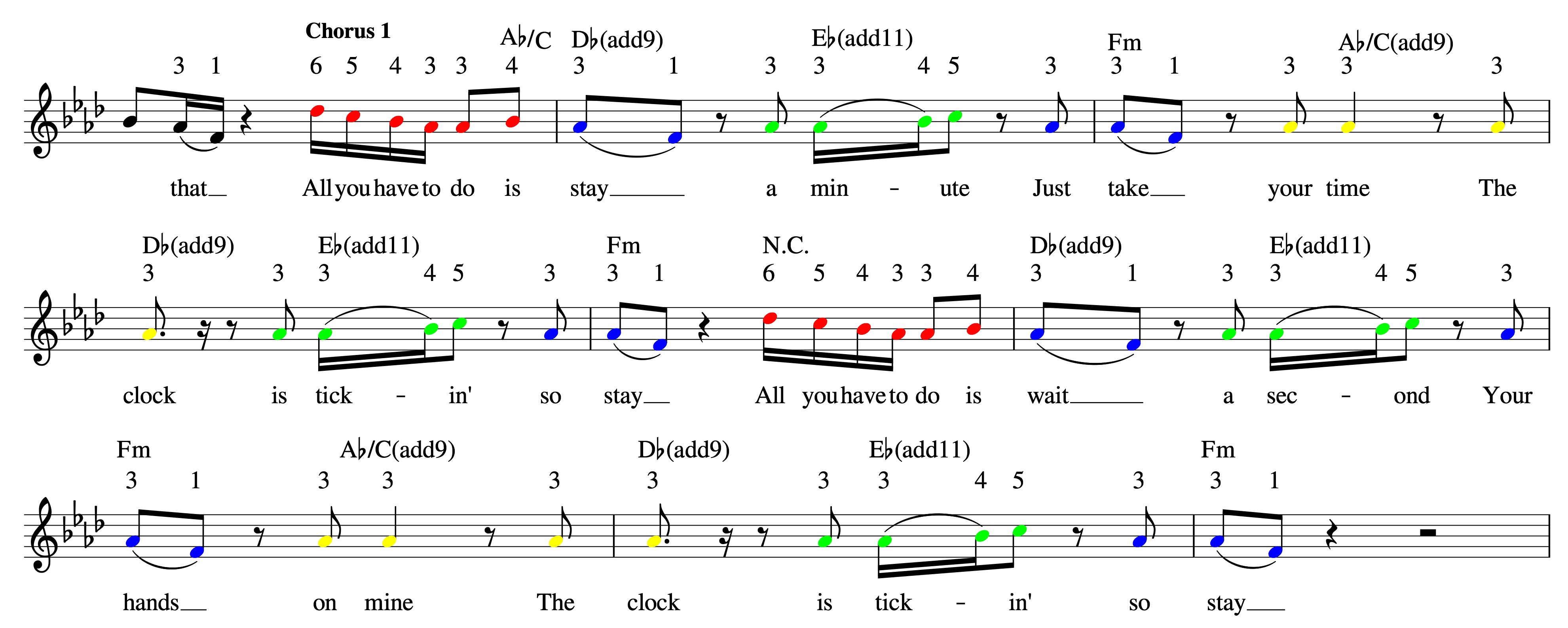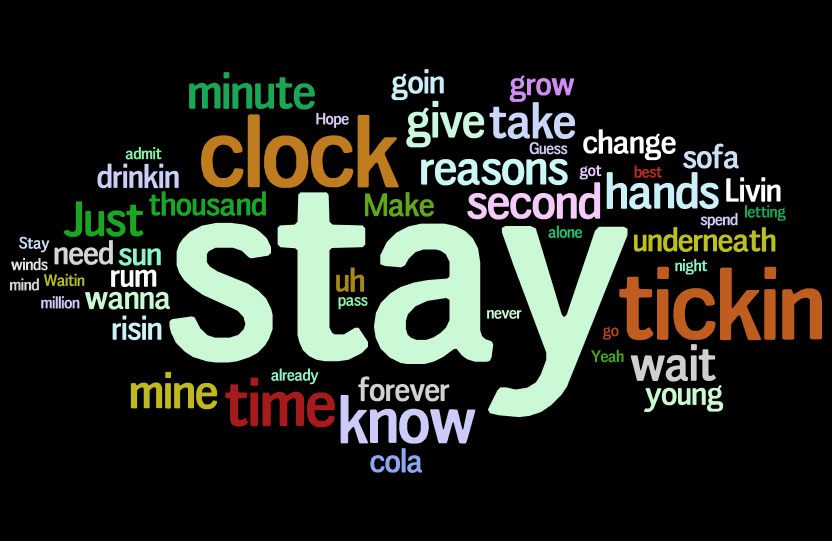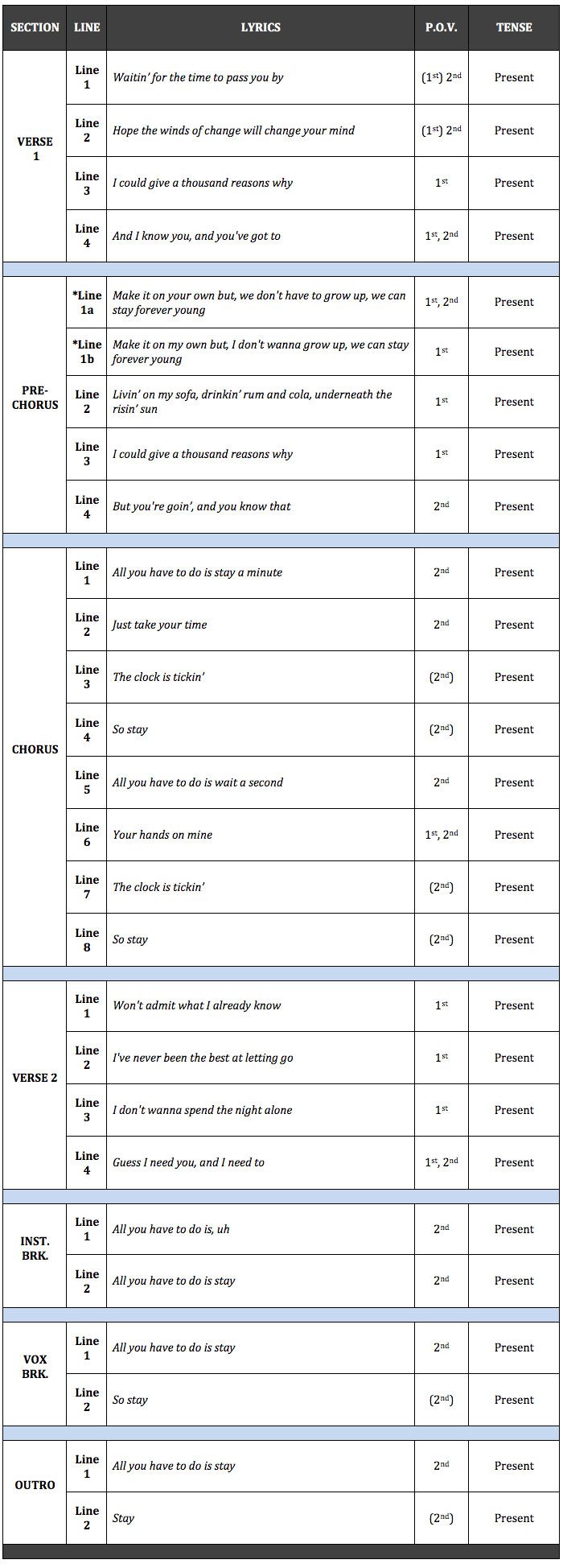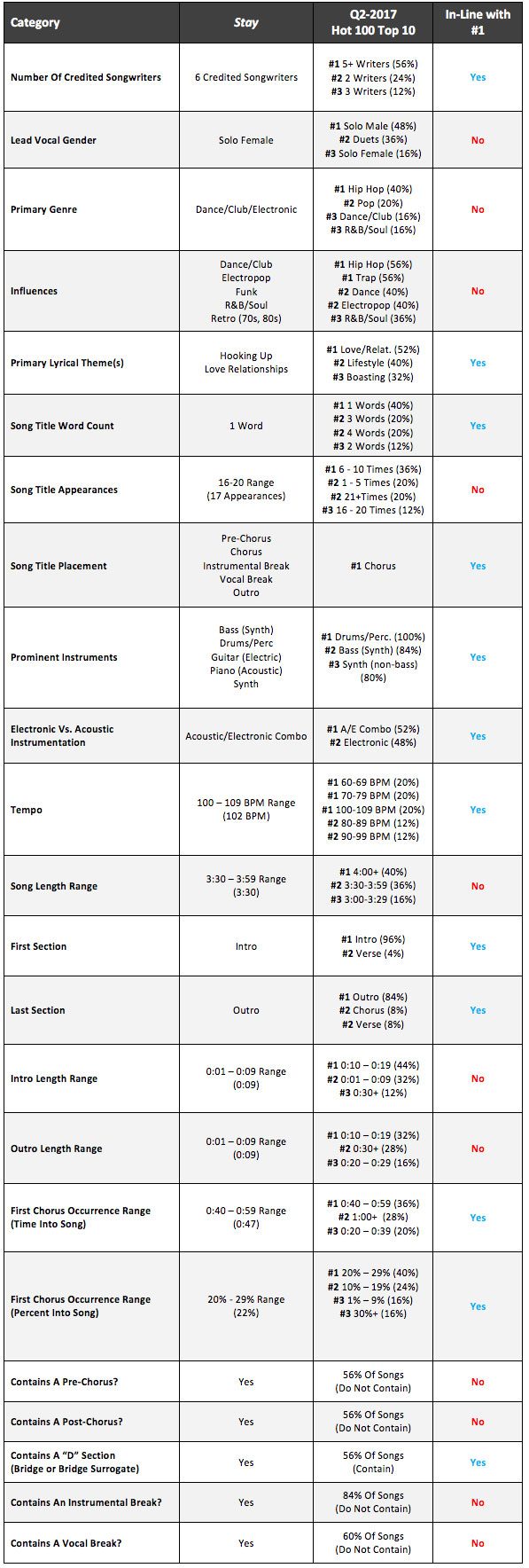To read this report, please log in.
Log inAbout This Report
Hit Songs Deconstructed reports take a deep dive into the what, how and why behind a current chart-topping hit. These exceptionally comprehensive reports feature a combination of impartial data and insightful analysis illustrated through charts, graphs, and notation.
Based on the Hit Songs Deconstructed PRO report, Essentials delivers high-level takeaways through insightful analysis illustrated with charts, graphs and notation, providing readers with an in-depth understanding of the hit songwriting and production techniques involved in crafting the song.
Download Stay Essentials as a PDF >>
Stay Deconstructed PRO
Released in February 2017, Stay is a collaboration between EDM DJ/producer Zedd and vocalist Alessia Cara, whose emotive vocals bring the lovelorn lyrics to life. While the song possesses many characteristics that enable it to easily connect with a wide mainstream audience, it’s the atypical characteristics that enable it to stand out and get noticed. Among the most notable are its Retro Disco and Funk influences, instruments such as vocoder and a ticking clock, and an atypically fragmented chorus that grabs the listener’s attention and doesn’t let go.
To date, Stay has landed in the Top 10 on 20 charts throughout the world, peaking at #1 on three including the Billboard US Hot Dance/Electronic Songs and US Mainstream Top 40.
At a Glance
Artists: Zedd & Alessia Cara
Song: Stay
Songwriters: Alessia Cara, Anton Zaslavsk (Zedd), Linus Wiklund, Mood Melodies, Noonie Bao, Sarah Aarons
Producers: Zedd, Linus Wiklund
Record Label: Interscope
Primary Genre: Dance/Club/Electronic
Influences: Dance, Electropop, Funk, R&B/Soul, Retro (1970s, 1980s)
Length: 3:30
Full Form: I-A-PC-B-IB-T-A-PC-B-IB-VB-B-O
Key: F Minor
Tempo: 102 BPM
First Chorus: 0:47 / 22% of the way into the song
Intro Length: 0:09
Electronic vs. Acoustic: Acoustic/Electronic Combo
Prominent Instruments: Drums/percussion, bass, guitar, piano, synth
Primary Lyrical Theme(s): Hooking Up, Love Relationships
Title Appearances: Stay appears 17 times within the song
Primary Lyrical P.O.V: 1st , 2nd
Section Abbreviation Key
I=Intro
A=Verse
PC=Pre-Chorus
B=Chorus
IB=Instrumental Break
VB=Vocal Break
T=Turnaround
O=Outro
Overview, Highlights & Takeaways
What follows are details about some of the key characteristics that help Stay to stand out among its mainstream contemporaries and connect with the listener on a heightened level.
Genre Standout: Retro Disco
Late 1970s / early 1980s Disco is not a typical influence found in the Top 10. It’s even more rare for a song to feature the influence in only one particular section. However, this is the case with Stay, which shifts into Retro Disco mode for the first and only time in the second pre-chorus. This differs from other mainstream hits that feature the influence throughout the majority of the song, such as I Feel It Coming and Get Lucky.
Genre Standout: Funk
Funk is not a typical influence found in current Top 10 hits. In Q2-2017, only two other songs featured the influence – I Feel It Coming (The Weeknd featuring Daft Punk) and That’s What I Like (Bruno Mars).
Melodic Standout: Rhythmically Fragmented Chorus
The chorus vocals in Stay are more rhythmically fragmented than is commonly found in Top 10 hits. This provides the chorus, and the song, with a unique standout quality in relation to many of its mainstream contemporaries.
Instrument Standout: Vocoder, Ticking Clock and Marching Snare
Vocoder, marching snare, and the tick of a clock, which are used to great effect in Stay, are quite rare in the Top 10 of the Hot 100. Two of the most notable recent and semi-recent hits that feature vocoder are Starboy (The Weeknd featuring Daft Punk), and Get Lucky (Daft Punk, Pharrell Williams, Nile Rodgers). A clock tick was featured in Justin Beiber’s What Do You Mean, and no recent Top 10 hits utilize a marching snare drum.
Harmony Standout: Augmented Chord
The Ab augmented chord found in the instrumental breaks, second pre-chorus, and third chorus is an extremely rare chord type to find not only in the Top 10, but anywhere in mainstream music. It’s more prevalent in Jazz and Funk music.
Sample Standout: Hummed Vocals
While the use of sung and spoken vocal samples in the Top 10 is commonplace, hummed vocals are not. Bearing a strong resemblance to Banks’s Poltergeist and featured in select sections throughout the song, this downtrodden, hummed vocal sample both accentuates the impact of the narrative and provides Stay with a unique quality compared to many of its mainstream contemporaries.
Section Standout: Instrumental Break Post Chorus
The instrumental break post chorus was not a common section in Top 10 hits in Q2-2017. The only other song to include this section was Country crossover Body Like A Back Road, which only contains one (Stay contains two).
Narrative Standout: Time
Love/relationships is the most widely used lyrical theme among songs that land in the Top 10 of the Billboard Hot 100. In order to provide it with a fresh and engaging spin, it’s communicated with a “time” connotation as portrayed in the chorus. The impact of the narrative is cleverly accentuated by the use of the ticking clock in the accompaniment.
Line 1: All you have to do is stay a minute
Line 2: Just take your time
Line 3: The clock is tickin’
Line 4: So stay
Line 5: All you have to do is wait a second
Line 6: Your hands on mine (ties in with “hands” of a clock)
Line 7: The clock is tickin’
Line 8: So stay
Connection Accentuator: Hook Melody Reinforcement
The melody that kicks off the chorus and contains the title lyric is repeated in each chorus and instrumental break as detailed in red below. This recurring line and select lyrics (“just take”; “your hands”; “so stay”) helps the hook and the song to be more memorable.
Connection Accentuator: Universal Lyrics / Target Demographic Appeal
The narrative is communicated in a universal manner so that it connects with a wide-reaching audience. However, certain lines further its appeal to a younger demographic, which the song is most primed to connect with. Examples:
- “Make it on your own but, we don’t have to grow up, we can stay forever young”
- “Livin’ on my sofa, drinkin’ rum and cola, underneath the risin’ sun”
Connection Accentuator: Cross-Section Lyric Repetition
The last two lines in the verse and pre-chorus sections feature similar, and in some cases the same, lyrics and structure. This provides the song with a heightened degree of familiarity and memorability.
Line 3 (verse 1, pre-chorus 1 & 2): “I could give a thousand reasons why”
Line 4: (verse and pre-chorus sections): Each line features a similar two-phrase structure that lyrically leads into the ensuing section:
- Verse 1: “And I know you, and you’ve got to”
- Verse 2: “Guess I need you, and I need to”
- Pre-chorus 1 & 2: “But you’re goin’, and you know that”
Form: I / A – PC – B – IB / T / A – PC – B – IB / VB – B – O
Stay kicks off with an intro and is directly followed by a 2x verse – pre-chorus – chorus – instrumental break sectional progression, which is broken up by a brief turnaround. Following the second instrumental break, a vocal break – chorus – outro sectional progression ensues, bringing the song to a conclusion.
Song Length: Stay clocks in 3:30, which is at the shortest end the most popular song length range over the past year (3:30 – 3:59: Q3-2016 to Q2-2017).
Section Length: Each section in the song except for three are 19 seconds / 8 bars in length. The exceptions are the intro and outro, which are half the length of the others, and the turnaround, which is the shortest section at just 2 seconds / 1 bar in length.
Sectional Time Allocation: The majority of time within Stay is allocated to the chorus, which comprises 27% of its total composition. The verse, pre-chorus and instrumental break sections follow at 18%, each. The vocal break comprises 9%, followed by the intro and outro at just 4%, each. The shortest section in the song is the turnaround, which comprises just 1%. Additionally, 45% of the song is spent in its infectious “hook centers,” which consist of the chorus and instrumental break sections.
First Chorus Appearance: Stay’s first chorus appears 47 seconds / 22% of the way into the song. The listener is kept engaged up to this point by the intro, verse, and first pre-chorus.
Stay progresses through three energy level “waves.” Each wave begins with a lower energy level compared to the section that precedes it, and concludes with an energy level peak, except for wave three which concludes with a lower energy level in the outro after the climax in chorus 3.
- Wave 1: Intro (I) – Instrumental Break 1 (IB1)
- Wave 2: Turnaround (T) – Instrumental Break 2 (IB2)
- Wave 3: Vocal Break (VB) – Outro (O)
The impact of choruses 2 and 3 and instrumental breaks 1 and 2 are accentuated by a swell effect employed at the end of the preceding section followed a transitional lull. The combination of the swell and lull provide a heightened degree of anticipation and dynamic contrast leading into the payoff that follows.
Key
Wave: Indicates a cross-sectional energy level flow from low-to-high
Stay features a fusion of Dance (EDM and Disco), Electropop, Funk, Retro (late 1970s / early 1980s) and R&B/Soul influences that shape its sound and vibe. The R&B/Soul and Retro influences are in effect throughout the song, while the Dance, Electropop and Funk influences are featured in only specific sections.
Additionally, Stay possesses a few harmonic commonalities with The Chainsmoker’s recent hit, Closer, and features a hummed vocal sample that bears a strong resemblance to Bank’s Poltergeist (2016).
Stay is a love/relationship themed song with sexual undertones about a protagonist who doesn’t want the antagonist to leave her. This widely used premise is provided with a fresh spin through its “time” references as depicted in the chorus.
Verse 1 – Chorus 1: The antagonist is leaving the protagonist, and the protagonist wants the antagonist to change their mind and “stay.”
Verse 2 – Chorus 2: The protagonist unwillingly comes to terms with the antagonist leaving, and realizes that she’ll have to “make it on her own.” However, she still wants the antagonist to change their mind and “stay.”
Stay features a host of different vocals that take its impact to a heightened level. Among them are natural-sounding and processed lead, singular and group harmony, vocoder-effected, pitch-shifted, background “hey” shouts and atmospheric “oh’s,” and varying levels of reverb and delay effects.
The vocal melody in Stay spans F2 to Db4. The verse and pre-chorus sections contain a three-part melodic structure while the chorus contains four. Both verses share the same part structure, and the pre-chorus features a similar structure as well, though it uses different melodic part assignments (i.e. part 1 in the verse is not the same as part 1 in the pre-chorus).
Lines in the chorus are fragmented by rests to create a choppy rhythm that contrasts the more easily flowing characteristic of the verses and pre-chorus.
Verse 1
Verse 2
Pre-Chorus
Chorus
Verse 1
Verse 2
Pre-Chorus
Chorus
Stay features an effective combination of in-line and cross-line rhyme schemes as well as repetitive lyrics to bolster the song’s memorability factor and engagement value.
- Verse 1: AAAX (“by” – “mind” – “why” – “to”)
- Verse 2: AAAX (“know” – “go” – “alone” – “to”)
- Pre-Chorus: AAXX (“young” – “sun” – “why” – “that”)
- Chorus: ABAC / ABAC (“minute” – “time” – “tickin’” – “stay” / “second” – “mine” – “tickin’” – “stay”)
Stay features six primary instrument types in the mix that shape its sound and vibe – synths, a vocal sample, drums/percussion, guitars, bass and piano.
- Synths: A variety of synths are used throughout the song. The most prominent are the organ pad, vocoder, and synth stabs.
- Vocal Sample: A hummed vocal sample that bears a strong resemblance to Banks’s Poltergeist is used in select sections throughout the song.
- Drums/Percussion (Acoustic and Electronic): A host of acoustic and electronic drums/percussion instruments are featured throughout the song. Among them are kick, marching snare, tom, tambourine, shaker, claps and others.
- Guitars: Electric guitars are featured in specific sections to impart a Disco/Funk influence and provide heightened momentum.
- Bass: A synth sub bass fills out the bottom end most prominently in the instrumental breaks and third chorus, and is featured more subtly in other sections as well.
- Piano: Acoustic piano augments the Disco vibe in the second pre-chorus.
Stay is based on two primary chord progressions. The first is Db-F5-Eb, Db-F5-Eb-Ab/C, which is used in the intro, verses, pre-chorus, vocal break, and outro. The second can be summarized as Db-Eb-Fm-C, Db-Eb-Fm with embellishments, and is utilized in the choruses and instrumental breaks.


Stay contains 13 sections in its framework:
- One intro
- Two verse sections
- Two pre-chorus sections
- Three chorus sections
- Two instrumental break sections (post choruses)
- One vocal break section (bridge surrogate)
- One turnaround
- One outro
Sections are arranged into the following form:
I / A – PC – B – IB / T / A – PC – B – IB / VB – B – O
Stay kicks off with an intro and is directly followed by a 2x verse – pre-chorus – chorus – instrumental break sectional progression, which is broken up by a brief turnaround. Following the second instrumental break, a vocal break – chorus – outro sectional progression ensues, bringing the song to a conclusion.
The instrumental break sections are classified as post choruses due to the infectious hooks they house directly following choruses 1 and 2. Reference the Music/Instrumentation and Vocal Melody sections of the report for details.
The vocal break functions as a bridge surrogate due to the departure it provides within the scope of the song in lieu of a narrative-advancing bridge.
Each section in the song except for three are 19 seconds / 8 bars in length. The exceptions are the intro and outro, which are half the length of the others, and the turnaround, which is the shortest section at just 2 seconds / 1 bar in length.
The majority of time within Stay is allocated to the chorus, which comprises 27% of its total composition. The verse, pre-chorus and instrumental break sections follow at 18%, each. The vocal break comprises 9%, followed by the intro and outro at just 4%, each. The shortest section in the song is the turnaround, which comprises just 1%.
Additionally, 45% of the song is spent in its infectious “hook centers,” which consist of the chorus and instrumental break sections.
Stay progresses through three energy level “waves.” Each wave except for wave 3 begins with a much lower energy level compared to the section that precedes it, and concludes with an energy level peak. Wave 3 differs in that it concludes with comparatively low energy level in the outro following the energy level peak in the chorus.
Key
Wave: Indicates a cross-sectional energy level flow from low-to-high
Section Progression: Sections that appear twice back-to-back on the graph denote the first half of a section vs. the second half (e.g. A-1, A-1)
- Wave 1: Intro (I) – Instrumental Break 1 (IB-1)
- Wave 2: Turnaround (T) – Instrumental Break 2 (IB-2)
- Wave 3: Vocal Break (VB) – Outro (O)
Stay begins with a low energy level in the intro due to its sparse characteristics, consisting of a subdued, hummed vocal sample, droning low organ chords, and a vinyl crackle effect.
With the accompaniment remaining constant, the energy level is kicked up a notch in the first half of the first verse (part X) due to the addition of Cara’s vocals into the mix. It essentially remains constant throughout the section, though her more impassioned, higher-register vocal in the second half of the section does provide momentum toward the ensuing pre-chorus.
The first half of the pre-chorus (part X) features a higher energy level than the preceding verse due in part to the more driving qualities of Cara’s vocals and the addition of marching snare drum and snaps. Both provide the section with a heightened degree of forward momentum. The level remains essentially the same in the second half of the section, part Y.
The first half of the chorus (part X) features a slightly higher energy level compared to the preceding pre-chorus. While both sections possess very differentiated accompaniment and vocals, the short stabs in the organ coupled with the addition of the vocoder and Cara’s more animated vocals provides the chorus with a higher level of intensity comparatively, despite the omission of the drums/percussion.
The energy level further increases in the second half of the section (part Y) due to the addition of the drum/percussion elements (marching snare and ticking clock), which provide increased momentum, as well as the additional synth and sub bass which provide the stabs with a heightened degree of power.
Toward the end of the chorus, a white noise synth swell effect is employed, which provides an increase in energy and anticipation as the song heads toward the ensuing instrumental break. In the last bar all the accompaniment elements are pulled save for the ticking clock, which remains in effect for the first two beats. Silence ensues on the “and” of beat 3, followed by a reverb-effected snare rim hit on beat 4. The sparseness of the arrangement enables the ensuing instrumental break section to hit with increased perceived impact.
The instrumental break features the highest energy level in the song thus far. This is primarily due to the additional instruments that have been added into the mix, as well as the higher level of the sub bass, which provides a greater sense of power. The energy level is further kicked up in the second half of the section due to the addition of tambourine, hi hat and shaker, all of which provide the section with additional momentum.
The energy level drops significantly in the turnaround due to its sparseness relative to the other sections. The only elements in the mix following the percussive hit at the beginning are the vinyl crackle effect and a vocal delay tail.
Following the low-energy turnaround, the level is kicked up in the second verse due to the reinstatement of the organ, percussion and vocals. Note that the verse 2 energy level is higher than its verse 1 counterpart due to the percussion in the mix, which wasn’t featured the first time around.
The energy level is thrust up in pre-chorus 2 due to the dramatic change in the accompaniment. Kick, bass, piano, guitar and additional percussion are added into the mix, which create a driving disco groove driven by a funky “Nile Rodgers/Chic” style guitar and four-on the floor kick.
A white noise swell effect enters the mix toward the end of pre-chorus 2, which heightens anticipation leading into the ensuing chorus. Following the swell, all of the instruments are pulled except for a sustained chord in the guitars and piano. The lull created along with the augmented quality of the last chord (Ab+/C) enables the chorus that follows to hit with increased perceived impact due to the dynamic contrast and tension imparted.
The energy level drops slightly at the beginning of chorus 2 due to the sparseness of the arrangement compared to the preceding pre-chorus. However, relative to chorus 1, chorus 2 has a slightly higher energy level due to the addition of the low tom hits, distorted bass, and ticking clock, which provide a heightened degree of intensity and tension. The level is further kicked up in the second half of the section due to the addition of snare and a white noise swell.
Toward the end of chorus 2, a white noise synth swell effect is employed that ups the tension heading into the instrumental break. In the last bar everything is pulled from the mix except for a “stay” melisma in the lead vocal followed by a transitional synth effect and a snare hit on beat four. Like in the first instrumental break post chorus impact accentuator, the sparseness of the arrangement enables the ensuing instrumental break section to hit with increased perceived impact.
The energy level is thrust up again in instrumental break 2 just as it is in instrumental break 1. While it utilizes the same core instrumentation as the first instrumental break, it features additional percussion that provides a slightly higher comparative energy level.
The energy level drops in the vocal break due to its sparser and more serene characteristics. The song breaks down in the first half to primarily organ, low-pass filtered electric guitar, a percussive “trailer hit,” white noise and a synth effect. The level is ramped up in the second half with the inclusion of the four-on-the-floor kick, an additional guitar, claps and marching snare.
At the end of the vocal break a busy, non-filtered marching snare is introduced along with a white noise swell. Together they bring the intensity of the section to a climax and create a heightened degree of tension leading into the chorus that follows. Following the build, a single kick on beat one of the last measure is followed by all of the instruments being pulled out from under Cara’s “all you have to do is” chorus vocal pickup. Together, the swell and transitional lull enable to the third and last chorus in the song to hit with increased perceived impact.
Stay’s energy level reaches an apex in the third and final chorus. Its energy is much higher than its chorus 1 and 2 counterparts due to the utilization of the fuller instrumental break accompaniment as opposed to that of the sparser choruses.
Following the energy level peak in the third chorus, the level drops off substantially in the outro as it essentially reverts to the sparse arrangement of the intro, consisting of organ, vocal humming and vinyl crackle. However, the level increases once again at the end of the section/song due to the swell effect employed, which cuts off abruptly and leaves the listener hanging.
Genres & Influences
Many of today’s hits feature a fusion of different genres, sub-genres and influences that helps to achieve the following:
- Provide the song with a unique sound that enables it to stand out from its mainstream contemporaries via interesting and at times unconventional pairings.
- Increase the fan base and sales potential of the artist and song by traversing multiple genres.
Stay features a fusion of Dance (EDM and Disco), Electropop, Funk, Retro (late 1970s / early 1980s) and R&B/Soul influences that shape its sound and vibe. The R&B/Soul and Retro influences are in effect throughout the song, while the Dance, Electropop and Funk influences are featured only in specific sections.
Key
X: Influence is featured in a particular section
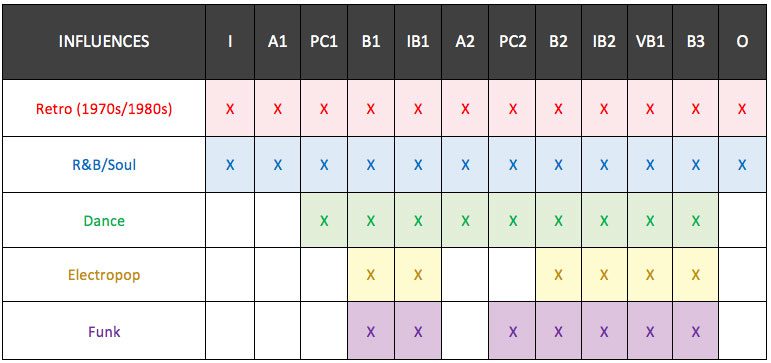

The entire song features an R&B/Soul influence. It is put into effect by the Cara’s soulful vocal delivery, the hummed vocal sample, chords and progressions, and instruments including organ and piano.
All sections in the song except for the intro, verse 1 and outro possess a dance influence, which is put into effect by the characteristics of the instrumentation and rhythm. Each section except for pre-chorus 2 features a hybrid contemporary/Retro Dance influence consisting of EDM and Retro 80s Electro Funk. Pre-chorus 2 provides a shift into more 70s Disco/Funk ala Chic and the more recent Retro chart-topper Get Lucky.
The Electropop influence is featured in the synth-driven sections of the song, which consist of the chorus, instrumental break and vocal break.
The Funk influence is put into effect by the timbre and patterns of the synths, vocoder and electric guitar in the chorus, instrumental break, vocal break and pre-chorus 2.
The entire song possesses an underlying late 1970s to early 1980s Retro influence, which is put into effect by the characteristics:
- The vinyl crackle effect
- The vocoder
- The Disco quality of pre-chorus 2
The humming in Stay bears a strong resemblance to the hummed vocals in Bank’s Poltergeist (2016).
There are a few notable commonalities shared by the chord progression used in the chorus and instrumental breaks in Stay and the chord progression used in the chorus in Closer:
- Both begin with a Major add9 chord.
- Both follow the progression Db-Eb-Fm at the beginning of the chord cycle.
- Both have a similar harmonic rhythm and use two chords per measure.
Closer – Chorus
Stay – Chorus 1 & 2 Part Y
Primary Instruments
Stay features six primary instrument types in the mix that shape its sound and vibe – synths, a vocal sample, drums/percussion, guitars, bass and piano.
A hummed female vocal sample is featured in the intro, verse and pre-chorus sections of the song. It’s heard most prominently in the intro and outro due to their sparse instrumentation, followed by the verse and pre-chorus 1 sections where it provides support for the vocals along with other elements. It takes a back seat in pre-chorus 2 due to the fuller arrangement of the section.
A warm, organ-sounding pad appears in every section of the song except for the turnaround following the first instrumental break. It plays long, sustained chords in the intro, verses, pre-choruses, vocal break and outro, and short chord stabs in the choruses and instrumental breaks.
A vocoder plays a prominent role in all three choruses and both instrumental breaks. It harmonizes with the lead vocals in the choruses and uses the vocals and vocoder harmony from the choruses in the instrumental breaks.
Low-pass filtered, upper-range synth stabs are featured playing chords along with the organ pad in second stanza (part Y) of the first and second chorus.
Bright saw wave stabs sound in conjunction with the vocoder and organ pad in both instrumental breaks and the third chorus.
This synth glides between notes in both instrumental breaks and the last chorus.
A modern, somewhat bright synth pad sounds only once in the song, in conjunction with a white noise sweep at the end of the second chorus.
The bell synth plays an ascending melody in the third chorus following the lyric “stay” in both stanzas. This is the only time it appears in the song.
Two bass types are featured in Stay. Both follow the chord progression.
Sub bass is used at a relatively low level in the mix in both pre-choruses and the second stanza (part Y) of chorus 2. It is featured prominently in the mix in instrumental break 1 & 2 and the third chorus.
A low, distorted saw wave bass is used in the first stanza (part X) of the second chorus. This is the only time it appears in the song.
Acoustic piano makes its only appearance in the second pre-chorus, where it’s featured prominently playing chords.
Two electric guitars with a funk/disco quality are featured within the song.
This guitar makes its first appearance in the second pre-chorus and once again in the vocal break. It plays a syncopated single-note line and is processed with a low-pass filter.
This guitar is layered on top of electric guitar 1. It plays a busier rhythm and is filtered to a lesser degree in part Y of the second pre-chorus and vocal break.
A wide range of drums and percussion are utilized in Stay. Among them are a clock tick and marching snare drum, which are quite rare in the Top 10 of the Hot 100.
A clock tick plays eighth notes in the part Y of the first chorus and the both parts of the second chorus.
Tambourine is heard prominently in part Y of both instrumental breaks and the entirety of pre-chorus 2 and chorus 3.
An electronic hi hat can be heard in the mix with the tambourine and shaker in part Y of instrumental break 1 and all of instrumental break 2 and chorus 3.
Shaker appears in part Y of instrumental break 1, and both parts of instrumental break 2 and chorus 3. It is lower pitched and has a “looser” character than many common shakers.
Sixteenth note claps, processed with a low-pass filter appear low in the mix in both pre-choruses, the second verse, and part Y of the vocal break.
A more prominent clap appears on each beat 2 in the instrumental breaks and third chorus.
A punchy clap, heavily-effected with reverb appears halfway through the second pre-chorus.
Marching snare is featured prominently throughout Stay. It is low-pass filtered in both pre-choruses, verse 2, and part Y of the vocal break. It appears unfiltered in part Y of choruses 1 & 2 and the vocal break.
Acoustic snaps, heavily effected with reverb appear in both pre-choruses.
A bright, punchy snare drum effected with reverb sounds on beat 4 of most measures in both instrumental breaks and the third chorus.
A punchy, modern electronic dance kick is utilized in the following sections:
- Instrumental break 1 & 2
- Pre-Chorus 2
- Vocal Break (Part Y)
- Chorus 3
A conga marks the transition point from part X into part Y in both pre-choruses.
A snare rim hit, heavily effected with reverb sounds at the end of chorus 1 and halfway through chorus 3.
Utilizes an assortment of processed acoustic and electronic drums and percussion to deliver a mainly sixteenth note fill at the halfway point of instrumental break 1 & 2 and at the end of parts X and Y in chorus 3.
An effected snare drum plays a five-stroke ruff (four quiet notes and one loud) as a transitional fill at the end of verses 1 & 2 and halfway through chorus 3.
This cinematic percussion/sound effect appears at the transition point from instrumental break 1 into the following turnaround, instrumental break 2 into the vocal break, and chorus 3 into the outro. It is in-line with sounds used to accent cuts in film trailers.
This is a slightly “tighter,” more percussive and less reverberant variation of stomp/trailer hit 1. It appears at the onset of verse 2, and chorus 2 parts X & Y.
A low, dampened tom propels the rhythm along with the ticking clock in part X of chorus 2.
A bright, finger cymbal-like hit appears at the beginning of pre-choruses 1 & 2, as well as halfway through both instrumental breaks.
The decay of a crash cymbal hit without the attack is heard at the beginning of chorus 3.
A vinyl crackle sound effect can be heard in the intro, both verses, both pre-choruses, the turnaround, the vocal break and the outro. It can be heard most prominently in the intro, outro and the turnaround following the first instrumental break.
A white noise swell is heard sporadically throughout the song both as a transitional element and to fill out the groove in the instrumental break. Reference the arrangement image for details.
A cymbal-like white noise effect it is utilized at the onset of both the vocal break and outro.
This is an electronic effect that descends in pitch over the course of part X of the vocal break.
A swirling, electronic effect is heard at the transition point into instrumental break 2.
Music & Instruments: Section By Section
- Vocal Sample: (Female humming – Level: Mid)
- Organ Pad: (Low chords – Level: Mid)
- Vinyl Crackle: (Sound effect – Level: Low)
Stay’s intro is both short and sparse, clocking in at 9 seconds and consisting of just three elements – a hummed female vocal sample, a droning organ, and a vinyl crackle effect.
The vinyl crackle effect imparts a Retro feel, which is present throughout the song in addition to its contemporary influences. The hummed vocal establishes the song’s R&B/Soul influence, which along with the droning organ establishes the song’s underlying “heavy heart” vibe that is evident in the lyrics.
Transition Point (Intro to Verse 1): The intro transitions seamlessly into the first verse.
- Vocal Sample: (Female humming – Level: Mid)
- Organ Pad: (Low chords – Level: Mid)
- **Snare Fill: (Ruff on high-pitched snare – Level: Mid)
- Vinyl Crackle: (Sound effect – Level: Low)
**Indicates the first appearance of an instrument in the mix
The core accompaniment from the preceding intro remains in effect throughout the first verse. The “heavy heart” vibe elicited by these elements effectively jibes with Cara’s emotive vocals in accentuating the impact of the downtrodden lyrics.
Transition Point (Verse 1 into Pre-Chorus 1): In the last bar of the verse, a brief ruff on high-pitched snare fill is heard, which marks the transition into the pre-chorus that follows.
- Vocal Sample: (Female humming – Level: Mid)
- Organ Pad: (Low chords – Level: Mid)
- **Sub Bass: (Sine wave bass – Level: Low)
- **Marching Snare (Filtered): (Grooving, syncopated marching pattern – Level: Mid)
- **Clap 1 (Acoustic): (Sixteenth note pattern – Level: Low)
- **Snaps (Acoustic): (Beats 2 & 4, heavy reverb – Level: Mid)
- **Conga (Acoustic): (Played with hands, fill at end of part X – Level: Mid-low)
- Vinyl Crackle: (Sound effect – Level: Low)
**Indicates the first appearance of an instrument in the mix
Same as Part X with the addition of:
- **White Noise Swell: (Filter sweep & volume swell low-to-high and end of section – Level: Mid-low)
The pre-chorus utilizes the core accompaniment from the intro and verse that precede it, and adds a bass and drum/percussion rhythm section for the first time in the song.
Carryover Elements
The utilization of the accompaniment from the intro and preceding verse keeps the underlying “heavy heart” vibe in effect.
New Elements
The addition of the snaps, filtered marching snare and claps provides the pre-chorus with a greater degree of momentum compared to the preceding verse. The addition of the sub bass low in the mix subtly fills out the bottom end.
Common & Atypical Mainstream Elements
The pre-chorus features instruments that are both popular and atypical in today’s Hot 100 Top 10. On the popular end of the spectrum are the snaps, which have been featured prominently in recent hits such as I’m The One, That’s What I Like, and Body Like A Back Road. On the atypical end is the marching snare. Together, these two instruments enable Stay to come across both in a familiar manner to a mainstream audience, and concurrently stand out from the pack.
Transition Point (Pre-Chorus 1 into Chorus 1): A white noise synth swell enters the mix in the last bar of the pre-chorus, ushering the listener into the chorus that follows.
- Organ Pad: (Low chord stabs, low-pass filtered – Level: Mid)
- **Vocoder: (Works in tandem with chorus vocals – Level: Mid)
Same as Part X with the following additions:
- **Synth Stabs 1 – Filtered: (Keyboard-like synth chords – Level: Mid)
- Sub Bass: (Sine wave bass – Level: Low)
- **Marching Snare (Acoustic – Unfiltered): (Grooving, syncopated marching pattern – Level: Mid)
- **Clock Tick (Acoustic): (Eighth note pattern – Level: Mid)
- White Noise Swell: (Filter sweep low-to-high – Level: Mid)
- **Snare Rim (Hybrid): (Reverb-effected hit at end of section – Level: Mid)
**Indicates the first appearance of an instrument in the mix
Part X: Db-Eb-Fm-C, Db-Eb-Fm (Fm: VI-VII-i-V, VI-VII-i)
Part Y: Db(add9)- Eb(add9)-Fm-Ab/C-Cm7, Db(add9)-Eb(add9)-Fm (Fm: VIadd9-VIIadd9-I-III6-v7-VIIadd9-VIIadd9-i )
The chorus features the most pronounced accompaniment shift in the song thus far, and engages the listener at a heightened level as a result.
In the first half of the section (part X), the core accompaniment from the preceding pre-chorus, verse and intro has been done away with. The only carryover is the organ, which is now playing short stabs on beats 1 and 3 as opposed to sustained chords.
The new addition is the vocoder, which is one of the chorus’s defining characteristics. Along with the organ stabs, it sounds on the last and third-to-last lyric on each line throughout the section, achieving the following:
- It heightens the vibrancy of the section against the less-vibrant organ, which fills out the bottom end.
- Its uniform placement on each line heightens familiarity within the section, thus making it more memorable.
- It provides the section with a funky Retro characteristic, most recently popularized in mainstream music by Daft Punk.
- It’s not a commonly found instrument in mainstream hits. As a result, it helps the song to further stand out and get noticed.
- Along with the organ, it locks in with the vocals to create an engaging rhythmic flow.
New Elements in Part Y
In the second half of the section (part Y), a new synth is added into the mix that provides the vocoder and organ stabs with additional color and a subtly higher degree of impact.
The most noticeable additions to the section, however, are the drums/percussion. The unfiltered marching snare (relative to the filtered marching snare in the pre-chorus) provides the section with more forward momentum as it heads toward the ensuing instrumental break. The ticking clock also adds to the momentum but more importantly provides the section, and the song, with a unique characteristic that helps it to stand out among its mainstream contemporaries in addition to jibing with and accentuating “the clock is tickin’” lyrics.
Side note: The last Hot 100 Top 10 hit to feature a prominent clock tick was Justin Bieber’s What Do You Mean back in late 2015 / early 2016.
Transition Point (Chorus 1 into Instrumental Break 1): Toward the end of the chorus, a white noise synth swell effect is employed, which provides an increase in energy and anticipation as the song heads toward the ensuing instrumental break. In the last bar, all the accompaniment elements are pulled save for the ticking clock, which remains in effect for the first three beats. Silence ensues on the “and” of beat 3, followed by a reverb-effected snare rim hit on beat 4. The sparseness of the arrangement enables the ensuing instrumental break to hit with increased perceived impact.
- Organ Pad: (Low chord stabs, low-pass filtered – Level: Mid)
- **Synth Stabs 2 – Bright: (Bright stabs – Level: Mid)
- *Vocoder: (Works in tandem with chorus vocals – Level: Mid)
- **Gliding Synth: (Glides between notes – Level: Mid)
- *Sub Bass: (Sine wave bass – Level: Mid)
- **Bright Snare (Electronic): (Prominent on beat 4 – Level: Mid)
- **Kick (Electronic): (Punchy modern dance kick – Level: Mid)
- **Clap 2 (Acoustic): (Accent on beat 2 – Level: Mid)
- **Drum Fill (Hybrid): (Effected snare/tom fill at end of section – Level: Mid)
- *White Noise Swell: (Small swells throughout – Level: Mid)
Same as Part X with the following additions:
- **Tambourine (Acoustic): (Mixed in with other high percussion – Level: Mid)
- **Hi Hat (Acoustic): (Eighth note pattern – Level: Mid)
- **Shaker (Acoustic): (Eighth note pattern – Level: Low)
- **Bright Hit (Hybrid): (Bright metallic hit – Level: Mid)
*Indicates a new or significantly changed up instrument in the mix compared to the preceding section
**Indicates the first appearance of an instrument in the mix
The instrumental break features the fullest arrangement and highest energy level in the song thus far, and provides “the drop.” This is a common feature in contemporary Dance-influenced hits, where after the lower-energy chorus the energy is ramped up to a climax and generally the singer drops out and is replaced by synths and chopped or effected vocals.
The first half of the section (part X) retains the core accompaniment from the preceding chorus, and adds/changes up the following elements:
- Additional synths (bright stabs, vocoder and glides) provide additional color and vibrancy, and mimic the rhythm of the vocals in the preceding chorus.
- The sub bass is featured more prominently in the mix, which provides for a heightened degree of power and bottom end relative to the preceding chorus.
- The kick, snare and claps that double the synth/bass/organ pad/vocoder rhythm provide the section with a heightened degree of power.
New Elements in Part Y
Ushered in by a brief electronic/acoustic hybrid drum fill, the second half of the section (part Y) incorporates additional percussion instruments including tambourine, hi hat, shaker, and a bright metallic hit that provide the section with additional color, texture and forward momentum.
Transition Point (Instrumental Break 1 into Turnaround): A white noise swell enters the mix toward the end of the section followed by a cinematic stomp/trailer hit signals the beginning of the turnaround.
- *Vocal Sample: (Female humming, pickup at end of section – Level: Mid)
- **Stomp/Trailer Hit 1 (Hybrid): (Cinematic percussion effect – Level: Mid)
- *Vinyl Crackle: (Sound effect – Level: Low)
*Indicates a new or significantly changed up instrument in the mix compared to the preceding section
**Indicates the first appearance of an instrument in the mix
The turnaround is the shortest section in the entire song, lasting for just two seconds. However, despite its short length its role is important for the following reasons:
- The cinematic stomp/trailer hit at the onset of the section signals that the first sectional progression of the song has come to an end (I-A-PC-B-IB / T /A-PC-B-IB / VB-B-O)
- The stomp acts in the manner of an “exclamation point,” further heightening the pleading connotation of the “so stay” lyrics that define the preceding chorus and instrumental break sections.
- The sparseness of the arrangement (vinyl crackle, “stay” vocal delay tail from the instrumental break, and the vocal hum sample toward the end of the section) brings the energy and the mood back down as the song heads into the second verse and embarks on its next sectional progression.
Transition Point (Turnaround into Verse 2): Another cinematic stomp/trail hit signals the beginning of the second verse.
- Vocal Sample: (Female humming – Level: Mid)
- *Organ Pad: (Low chords – Level: Mid)
- *Marching Snare (Acoustic – Filtered): (Grooving, syncopated marching pattern – Level: Mid)
- *Clap 1 (Acoustic): (Sixteenth note pattern – Level: Low)
- *Snare Fill: (Ruff on high-pitched snare – Level: Mid)
- **Stomp/Trailer Hit 2 (Hybrid): (Cinematic percussion effect at beginning of section – Level: Mid)
- Vinyl Crackle: (Sound effect – Level: Low)
*Indicates a new or significantly changed up instrument in the mix compared to the preceding section
**Indicates the first appearance of an instrument in the mix
After kicking off the section on a powerful, dramatic note with a cinematic stomp/trailer hit the second verse features the same core accompaniment as its verse 1 counterpart, which puts the “heavy heart” vibe back into effect, but adds one additional element – filtered marching snare – which achieves the following:
- It provides like-section contrast against its verse 1 counterpart, which heightens the song’s engagement value.
- It kicks up the energy level and provides increased forward momentum.
The filter begins to open as the section progresses, and concludes with the same snare fill utilized at the end of the first verse.
Transition Point (Verse 2 into Pre-Chorus 2): In the last bar of the verse, a brief ruff on high-pitched snare marks the transition into the pre-chorus that follows. Note that this is the same transition method utilized to transition from verse 1 into pre-chorus 1.
- Vocal Sample: (Female humming – Level: Mid)
- Organ Pad: (Low chords – Level: Mid)
- *Sub Bass: (Sine wave bass – Level: Low)
- **Electric Guitar 1: (Filtered – Level: Mid)
- **Acoustic Piano: (Sustained chords – Level: Mid)
- Marching Snare (Acoustic – Filtered): (Grooving, syncopated marching pattern – Level: Mid)
- **Electronic Snare: (Single hit in part X and Y – Level: Mid)
- *Kick (Electronic): (Punchy modern dance kick – Level: Mid)
- Clap 1 (Acoustic): (Sixteenth note pattern – Level: Low)
- **Clap 3 (Acoustic): (Single clap in part X and Y – Level: Low)
- *Snaps (Acoustic): (Beats 2 & 4, heavy reverb – Level: Mid)
- *Tambourine (Acoustic): (Up-beat eighth notes – Level: Mid)
- *Bright Hit (Hybrid): (Bright metallic hit – Level: Mid)
- *Drum Fill (Hybrid): (Effected snare/tom fill at end pt. X – Level: Mid)
- Vinyl Crackle: (Sound effect – Level: Low)
*Indicates a new or significantly changed up instrument in the mix compared to the preceding section
Same as Part X with the following additions:
- **Electric Guitar 2: (Not Filtered – Level: Mid)
- *White Noise Swell: (Filter sweep and volume swell low-to-high – Level: Mid)
**Indicates the first appearance of an instrument in the mix
*Indicates a new or significantly changed up instrument in the mix compared to the preceding section
Pre-chorus 2 provides an unexpected accompaniment departure in the scope of the song. Utilizing the core elements from pre-chorus 1, it introduces the following:
- Electric guitar playing a syncopated single-note line processed with a low-pass filter.
- Acoustic piano playing mostly sustained chords.
- Four on the floor kick.
- Additional percussion elements including tambourine playing upbeat eighth notes.
Together, these elements provide the section, and the song, with a driving Retro Disco vibe, which is reminiscent of groups like Chic and more recently Daft Punk’s Get Lucky (which features Chic’s Nile Rodgers). The unexpectedness of this shift heightens the overall engagement value of the song, and accentuates its impact in a club setting.
Transition Point (Pre-Chorus 2 into Chorus 2): As is the case at the end of pre-chorus 1, a white noise synth swell enters the mix in the last bar of pre-chorus 2, which begins to usher the listener into the chorus that follows. The difference this time around is that all the accompaniment elements are pulled at the tail end except for the electric guitar and piano, which is followed by a cinematic stomp/trailer hit at the onset of the ensuing chorus. This changeup achieves the following:
- It provides engaging contrast against the first pre-chorus / chorus transition in the song.
- The lull created enables the ensuing chorus to hit with increased impact.
- *Organ Pad: (Low chord stabs, low-pass filtered – Level: Mid)
- *Vocoder: (Works in tandem with chorus vocals – Level: Mid)
- **Distorted Bass: (Edgy low saw tooth bass – Level: Mid)
- *Clock Tick (Acoustic): (Eighth note pattern – Level: Mid)
- *Stomp/Trailer Hit 2 (Hybrid): (Cinematic percussion effect at beginning of section – Level: Mid)
- **Tom (Acoustic): (Heavy low tom hits – Level: Mid)
Same as Part X with the following additions:
- *Synth Stabs 1 – Filtered: (Keyboard-like synth chords – Level: Mid)
- **Synth Pad: (Crescendo at end of section – Level: Low)
- *Marching Snare (Acoustic – Unfiltered): (Grooving, syncopated marching pattern – Level: Mid)
- *Bright Snare (Electronic): (Single hit at end of section – Level: Mid)
- White Noise Swell: (Filter sweep and volume swell low-to-high – Level: Mid)
- **Electro Synth Effect: (Swirling effect – Level: Mid)
*Indicates a new or significantly changed up instrument in the mix compared to the preceding section
**Indicates the first appearance of an instrument in the mix
Part X: Db-Eb-Fm-C, Db-Eb-Fm (Fm: VI-VII-i-V, VI-VII-i)
Part Y: Db(add9)- Eb(add9)-Fm-Ab/C-Cm7,Db(add9)-Eb(add9)-Fm (Fm: VIadd9-VIIadd9-I-III6-v7-VIIadd9-VIIadd9-i)
Chorus 2 features the same accompaniment characteristics as its chorus 1 counterpart with the following changeups/additions:
- It begins with a cinematic stomp/trailer hit, which enables the section to hit with a heightened degree of impact compared to the first time around.
- Distorted, saw tooth bass stabs are paired with the organ stabs from chorus 1. This provides the section with a heightened degree of power.
- Acoustic tom sounds in tandem with the organ and bass stabs, also adding to the power of the section.
- The ticking clock is featured in the first half of the section in addition to the second half (it was only featured in the second half of chorus 1). It’s more audible in the first half due to the sparseness of the arrangement, and provides the section with a greater sense of urgency.
- Additional synths are paired with the white noise swell toward the end of the section, which provides subtle contrast compared to the first time around in the song.
Transition Point (Chorus 2 to Instrumental Break 2): The transition from chorus 2 into instrumental break 2 begins in a similar manner as in chorus 1, with the white noise swell (though this time paired with an additional synth). However, this time around, following the swell the ticking clock is pulled from the mix along with all the accompaniment elements, which provides a couple beats of near silence. This adds an element of surprise and leaves extra space for Cara’s prolonged “stay” melisma, which wasn’t featured at the end of the first chorus. A quivering synth effect then enters the mix, followed by a crack of a snare rim that ushers in the instrumental break that follows.
- Organ Pad: (Low chord stabs, low-pass filtered – Level: Mid)
- *Synth Stabs 2 – Bright: (Bright stabs – Level: Mid)
- *Vocoder: (Works in tandem with chorus vocals – Level: Mid)
- *Gliding Synth: (Glides between notes – Level: Mid)
- *Sub Bass: (Sine wave bass – Level: Mid)
- Bright Snare (Electronic): (Prominent on beat 4 – Level: Mid)
- *Kick (Electronic): (Punchy modern dance kick – Level: Mid)
- *Clap 2 (Acoustic): (Accent on beat 2 – Level: Mid)
- *Tambourine (Acoustic): (Single hit at onset of section, consistent pattern in second half – Level: Mid)
- *Hi Hat (Acoustic): (Eighth note pattern – Level: Mid)
- *Shaker (Acoustic): (Eighth note pattern – Level: Low
- *Drum Fill (Hybrid): (Effected snare/tom fill at end of stanza – Level: Mid)
- *Snare Fill (Acoustic): (Plays a ruff at onset of section – Level: Mid)
- *Bright Hit (Hybrid): (Bright metallic hit at beginning of Part X and Y– Level: Mid)
- *White Noise Swell: (Small swells throughout – Level: Mid)
Same as Part X
*Indicates a new or significantly changed up instrument in the mix compared to the preceding section
Instrumental break 2 features the same core accompaniment characteristics as its instrumental break 1 counterpart. The main difference is that there is more percussion featured in the first half of the section this time around, which provides subtly increased momentum and texture.
Transition Point (Vocal Break 2 into the Vocal Break): Essentially the same technique utilized to transition vocal break 1 into the turnaround is utilized here – a white noise swell enters the mix toward the end of the section followed by a cinematic stomp/trailer hit signals the beginning of the vocal break. The main difference is that a white noise hit is paired with the stomp/trailer hit, that decays in the first half of the section.
- *Organ Pad: (Low chords – Level: Mid)
- *Electric Guitar 1: (Filtered – Level: Mid)
- *Stomp/Trailer Hit 1 (Hybrid): (Cinematic percussion effect at beginning of section – Level: Mid)
- *White Noise Hit: (Prominent hit at onset of section, decays over the course of the first half – Level: Mid)
- **Downer: (Synth effect that descends in pitch over the course of the section – Level: Mid-low)
- *Vinyl Crackle: (Sound effect – Level: Low)
Same as Part X with the following addition:
- *Electric Guitar 2: (Not Filtered – Level: Mid)
- *Marching Snare (Acoustic – Filtered): (Grooving, syncopated marching pattern – Level: Mid)
- *Marching Snare (Acoustic – Unfiltered): (Grooving, syncopated marching pattern – Level: Mid)
- *Kick (Electronic): (Punchy modern dance kick – Level: Mid)
- *Clap 1 (Acoustic): (Sixteenth note pattern with accents on beat 2 – Level: Low)
- White Noise Swell: (Filter sweep low-to-high – Level: Mid)
*Indicates a new or significantly changed up instrument in the mix compared to the preceding section
**Indicates the first appearance of an instrument in the mix
The vocal break provides a pronounced accompaniment departure in the scope of the song by going into breakdown mode. All instruments from the preceding instrumental break are omitted except for the organ, which is now playing low, sustained chords. The section begins with a white noise hit that decays throughout the first half of the section, and the Funk-driven guitar from pre-chorus 2 playing a syncopated single-note line processed with a low-pass filter makes a return. The guitar provides the first half of the section both with texture AND momentum, since there aren’t any drums/percussion in the mix.
In the second half of the section, filtered marching snare, claps, and four-on-the-floor kick are introduced, which provide increased power and momentum, and a second electric guitar is paired with the first, which enables its funky qualities to further punctuate through the mix.
Also introduced are a low-to-high white noise sweep, an additional synth effect and unfiltered marching drums that takes the excitement factor of the section to an apex as it heads into the ensuing third and final chorus.
Transition Point (Bridge to Chorus 3): Following a punctuating kick, the full accompaniment save for the vinyl crackle is pulled out from under Cara’s “all you have to do is” pickup into the chorus that follows. This chorus impact accentuator technique enables the chorus to hit with increased impact due to the lull created.
- *Organ Pad: (Low chord stabs, low-pass filtered – Level: Mid)
- *Synth Stabs 2 – Bright: (Bright stabs – Level: Mid)
- *Vocoder: (Works in tandem with chorus vocals – Level: Mid)
- *Gliding Synth: (Glides between notes – Level: Mid)
- **Bell Synth: (Ascending high melody at end of both stanzas – Level: Low)
- *Sub Bass: (Sine wave bass – Level: Mid)
- *Bright Snare (Electronic): (Prominent on beat 4 – Level: Mid)
- *Kick (Electronic): (Punchy modern dance kick – Level: Mid)
- *Clap 2 (Acoustic): (Accent on beat 2 – Level: Mid)
- *Tambourine (Acoustic): (Mixed in with hi hat and shaker throughout – Level: Mid)
- *Hi Hat (Acoustic): (Eighth note pattern – Level: Mid)
- *Shaker (Acoustic): (Eighth note pattern – Level: Low)
- *Drum Fill (Hybrid): (Effected snare/tom fill at end of each stanza – Level: Mid)
- *Snare Rim (Hybrid): (Reverb-effected hit at end of stanza – Level: Mid)
- *White Noise Swell: (Small swells throughout – Level: Mid)
- **Cymbal Decay (Acoustic): (Decay of cymbal hit without the attack – Level: Low)
Same as Part X with the following addition:
- *Snare Fill (Acoustic): (Ruff on high-pitched snare – Level: Mid)
*Indicates a new or significantly changed up instrument in the mix compared to the preceding section
**Indicates the first appearance of an instrument in the mix
Chorus 3 differs dramatically from choruses 1 & 2 in that it uses the primary accompaniment from the instrumental breaks rather than the choruses. This both provides engaging like-section contrast in the scope of the song (i.e. chorus 3 vs. choruses 1 and 2), and brings the energy and excitement level to an apex as it nears a conclusion.
Compared to the instrumental breaks, chorus 3 differs as follows:
- All instruments are pulled from the first beat of the section except for the vocoder.
- The vocoder is lower in the mix.
- Ascending arpeggios are added on a “bell synth” at the end of each stanza.
- The percussion elements that were added in for part Y of instrumental break 1 & 2 (shaker, tambourine, hi hat) are in both stanzas.
Transition Point (Chorus 3 to Outro): Essentially the same transition used from the second instrumental break to the vocal break is used here. The only difference is the inclusion of the bell synth arpeggio.
- *Vocal Sample: (Female humming – Level: Mid)
- *Organ Pad: (Low chords – Level: Mid)
- *Stomp/Trailer Hit 1 (Hybrid): (Cinematic percussion effect at beginning of section – Level: Mid)
- *Vinyl Crackle: (Sound effect – Level: Low)
- White Noise Swell: (Filter sweep and volume swell low-to-high at end of section – Level: Mid)
- *White Noise Hit: (Hit with decay at onset of section – Level: Mid)
*Indicates a new or significantly changed up instrument in the mix compared to the preceding section
The outro essentially brings the song full-circle by reverting to the sparse characteristics of the intro accompaniment, consisting primarily of the vocal sample, organ, and vinyl crackle. The main differences are as follows:
- A white noise hit decays throughout the section, which provides additional texture.
- A white noise /organ pad swell enters during the fourth bar of the section and cuts off abruptly without decay. The false ending that this effect provides leaves the listener hanging and hopefully wanting more.
Harmonic Progressions
Stay is based on two primary chord progressions. The first is Db-F5-Eb, Db-F5-Eb-Ab/C, which is used in the intro, verses, pre-chorus, vocal break, and outro. The second can be summarized as Db-Eb-Fm-C, Db-Eb-Fm with embellishments (details below), and is utilized in the choruses and instrumental breaks.
The first chord progression: Db-F5-Eb, Db-F5-Eb-Ab/C (Fm: VI-i5-VII, VI-i5-VII-III6) appears in the intro, and is primarily delivered by the organ pad. While relatively simple, the syncopation employed in the first bar of each two-bar phrase adds rhythmic interest and momentum, and the inverted Ab/C chord at the end of each phrase creates a slight bit of tension that is resolved on the following downbeat. These chords are bland relative to chorus and instrumental break, and move at a slower pace which gives the song space to breathe (especially the open-fifth F5) and space to grow. Each chord is in root position save for the last, which is in first inversion – Ab with C in the bass.
The second chord progression appears in three versions over the course of the song. Version A appears in part X of choruses 1 & 2, and is expanded on in part Y (version B). It is even further expanded in the instrumental break (version C), which is also utilized in both stanzas of the third chorus. Like chord progression 1, this chord progression begins on Db, but that’s practically all they share in common.
In part X of choruses 1 & 2 the chord progression is sparse and played in open voicings by the organ pad and synth stabs. It progresses through Db-Eb-Fm-C, Db-Eb-Fm (Fm: VI-VII-i-V, VI-VII-i) on quarter notes on beats 1 & 3 of each measure.
The chord progression develops in the second half of the first chorus to include denser chords with added tones, a more melodic contour in the top voice, and more rhythmic divisions. Due to the addition of the upper chord voices in the synth stabs, the progression is now Db(add9)- Eb(add9)-Fm-Ab/C-Cm7,Db(add9)-Eb(add9)-Fm (Fm: VIadd9-VIIadd9-I-III6-v7-VIIadd9-VIIadd9-i). This progression is used for the instrumental breaks and both stanzas of chorus 3.
Comparison to The Chainsmokers Closer
There are a few notable commonalities shared by this progression (progression 2, version B) and the chord progression used in the chorus in The Chainsmoker’s Closer:
- Both begin with a major add9 chord.
- Both follow the progression Db(add9)-Eb-Fm at the beginning of the chord cycle.
- Both have a similar harmonic rhythm and use two chords per measure.
Closer – Chorus
Stay – Chorus 1 & 2 Part X
The chord progression reaches its most complex in the instrumental break. Much of the progression is the same as chorus 1 part Y, but the end of the second and sixth measures are altered to be more chromatic with an Ab#5/C chord and C7 chord. The Ab#5 is functioning as a C7#5 as it goes to C7 and then to Db(add9), creating a minor deceptive cadence (V-VII). This is a very unusual progression in pop music, and creates a great deal of harmonic interest which really helps the song to stand out. This progression is used in both instrumental breaks and the last chorus. The full progression is Db(add9)- Eb(add9)-Fm-Ab#5/C-C7,Db(add9)-Eb(add9)-Fm (Fm: VIadd9-VIIadd9-I-III6#5-V7-VIIadd9-VIIadd9-i).
Verse 1 features an AAAX rhyme scheme. Lines 1, 2 and 3 are connected by the “eye” sounding commonality at the end in the lyrics “by,” “mind” and “why.” Line 4 breaks this pattern via the changeup to the “ou” sound in the lyric “to” at the end. Note that line 4 contains two additional “ou” sound instances in the lyrics “you” and “you’ve,” which reinforces the connection and memorability of the line.
Additionally, lines 1, 3 and 4 contain an additional “eye” sounding lyric (i.e. “time” and “I,”), which reinforces the memorability of the full section.
Like verse 1, verse 2 features an AAAX rhyme scheme. However, the sound of the primary rhyme at the end of lines 1, 2 and 3 differs. Here, the commonality is the “oh” sound in the lyrics “know,” “go” and “a-lone.”
Additionally, there are a couple of commonalities between both verse sections to take note of:
- Line 4 in both verse sections features the “ou” sounding commonality in the lyrics “you” and “to.” Also note that the lyrics “I need” are repeated twice, which reinforces the memorability of the line.
- Each line in verse 2 features an “eye” sounding commonality, which is also the case in verse 1.
Pre-chorus 1 features an AAXX rhyme scheme. Lines 1 and 2 are connected by the “uh” sounding commonality at the end in the lyrics “young” and “sun.” Lines 3 and 4 do not rhyme with one another other or the other lines in the section.
Considering that lines 1 and 2 are quite lengthy – each consisting of 19 syllables – the in-line rhymes make each line, as well as the section as whole, more memorable.
Phrase commonality
Each of the three phrases on both lines features the “uh” sounding commonality:
- Line 1: “but,” “up,” “young”
- Line 2: “so-fa,” “co-la,” “sun”
Furthermore, the first two phrases on each line are further connected by the “oh” sounding commonality that precedes the “uh” rhymes:
- Line 1: “own but,” “grow up”
- Line 2: “so-fa,” “co-la”
Pre-Chorus 2 Changeup
Pre-chorus 2 features the same lyrics as pre-chorus 1 except on the first line. Note that this does not impact the rhyme scheme:
- Pre-Chorus 1, Line 1: “Make it on your own but, we don’t have to grow up, we can stay for-ev-er young”
- Pre-Chorus 2, Line 1: “Make it on my own but, I don’t wan-na grow up, we can stay for-ev-er young”
Both stanzas in the chorus (lines 1-4 and 5-8) feature an ABAC rhyme scheme:
- Lines 1, 3, 5, 7: Connected by the “in” sounding commonality at the end in the two-syllable lyrics “min-ute,” “tick-in” and “sec-ond” (pronounced “sec-in”).
- Lines 2, 6: Connected by “time” and “mine” at the end, respectively.
- Lines 4, 8: Both feature the lyrics “so stay”
Additional Commonalties
The following additional commonalities reinforce the connection value and memorability of the chorus:
- The “ay” commonality at the end of lines 4 and 8 is reinforced on lines 1, 4 and 5 in the lyrics “stay,” “take” and “wait.” However, note that these commonalities appear in the body of each line, and not at the end.
- The first line in both stanzas (1 and 4) begins with the same lyrics – “all you have to do is.”
- The last two lines in each stanza (3,4 and 7,8) are the same.
The instrumental break features an ABAB rhyme scheme. Each line begins with the same lyrics, “all you have to do is,” and alternates ending with the nonsense “uh” and the title “stay” throughout the section.
The vocal break features an AAX rhyme scheme. Lines 1 and 2 are connected by the title lyric “stay” at the end.
The outro features an AA rhyme scheme, with the connection being the title lyric, “stay.”
The following lyrics are featured in multiple sections throughout the song, which heightens its memorability:
“I could give a thousand reasons why”
- Verse 1: line 3
- Pre-chorus, line 3
“All you have to do is…”
- Chorus: lines 1 and 5
- Instrumental break: All lines
- Vocal break: line 4
- Outro: line 1
“Stay”
- Pre-chorus: line 1
- Chorus: lines 1, 4 and 8
- Instrumental break: lines 2 and 4
- Vocal break: lines 1 and 2
- Outro: all lines
Vocals
Stay features a host of different vocals that take its impact to a heightened level. Among them are natural-sounding and processed lead, singular and group harmony, vocoder-effected, pitch-shifted, background “hey” shouts and atmospheric “oh’s,” and varying levels of reverb and delay effects.
KEY
- Lead Nat.: Lead vocal that possesses a natural, not heavily-processed quality
- Lead Proc.: Lead vocal that possesses a processed quality
- Harm Group: Group vocals that harmonize with the lead
- Harm Single: Single voice that harmonizes with the lead
- Harm Voc.: Vocoder-processed vocals that harmonize with the lead
- Harm P.S: Pitch-shifted vocal that harmonizes with the lead an octave lower
- Ind. “Hey”: “Hey” vocal that appears independently of the lead
- Ind. “Oh”: Melismatic “oh” sounding vocal that appears independently of the lead
- S: Sung
- SH: Shout
- Bold Lyric: Pronounced delay effect
Verse 1 features Cara’s sung lead. It’s processed with moderate reverb and delay, the latter being featured prominently on the last lyric of each line, as well as at the end of the first phrase on line 4. The delay is set to a quarter note and is filtered to allow only hi-mid frequencies through resulting in a sound similar to a telephone. The delay tail fills the gap between lines, slowly fading until the next line begins.
Pre-chorus 1 features both vocal commonalities and differences with verse 1 that precedes it. The main commonality is Cara’s lead, which is processed with reverb and features pronounced delay at the end of lines and phrases as depicted in the chart above.
The primary difference is the group female harmony that’s employed on the last phrase in lines 1 and 2. It’s featured mid-level in the mix and panned l/r in the stereo field. Its addition provides these vocal segments with a bigger feel, provides engaging contrast compared to the preceding verse, and heightens the memorability factor of the section due to the harmony being added in the same place in both lines.
There is also a “hey” shout that is heard for the first time in the song at the end of line 2. It possesses a similar characteristic to “hey” shouts featured in other mainstream hits, such as the Taylor Swift / Kendrick Lamar duet, Bad Blood.
Additionally, note that while pronounced delay is featured at the end of line 3 and the first phrase on line 4 like in the verse, it is NOT utilized on the last lyric on line 4. The lack of delay here allows the chorus vocals, which pick up at the tail end of the pre-chorus, to be clearly heard and prevents the mix from getting cluttered. The space in the mix created by not using delay here allows one of the most important hooks in the song to cut through.
As is the case with the preceding sections, chorus 1 features Cara’s lead. However, the vocal processing has been changed up. She sings louder, resulting in a fuller, more present tone. Her voice is more processed (likely due to doubling and heavier compression), and less reverb is utilized. This enables her voice to cut through the mix and helps to give the chorus a unique sonic identity relative to the other sections in the song.
Additionally, the third to last and last lyric on each line feature vocoder-processed background vocals that harmonize with Cara’s lead. This addition achieves the following:
- It provides the chorus with a heightened degree of engagement value.
- It enables the chorus to further stand out among the other sections in the song.
- The uniform line-to-line placement of the vocoder creates additional familiarity within the section, thus making it more memorable.
In contrast to the chorus which features Cara’s lead and interspersed vocoder background vocals on certain lyrics, the instrumental break features two disparate vocals that harmonize on each full line. Cara’s processed lead from the chorus remains in effect, albeit at a lower level in the mix, and is paired with a more prominent, heavily effected/pitch-shifted vocal that harmonizes an octave below her vocals. The addition of this heavily effected vocal provides the instrumental break with an additional unique characteristic in the scope of the song.
Both vocals are in effect throughout the section except for the last lyric on line 1, which omits Cara’s vocal at the end on the lyric, “uh.” However, Cara’s vocal is more prominent on the last lyric on line 2, “stay,” which is treated with a lengthy delay tail that dissipates early in the verse that follows.
Cara’s lead in verse 2 reverts to the more natural-sounding, reverb-laden processing of verse 1. This provides engaging cross-section contrast against the more highly processed chorus and instrumental break that precede it, as well as like-section familiarity due to the similarity to verse 1. The main difference is that the delay effect is NOT employed on the last lyric on line 3, “alone.” This is because it’s sung in a prolonged melismatic manner, and a delay effect would interfere with its impact.
Additionally, a low-level, processed, descending “oh” background vocal is featured at the end of lines 1, 2 and 3. Its addition provides like-section contrast (it wasn’t featured in verse 1), and subtly provides the section with additional color.
Pre-chorus 2 possesses essentially the same vocal qualities as its pre-chorus 1 counterpart. The main difference, like the preceding verse, is that the delay effect is NOT employed on the last lyric on line 3, “why.” This is because it is sung in a melismatic manner, and a delay effect would interfere with its impact.
Chorus 2 possesses essentially the same vocal characteristics as chorus 1, with one difference. The final “stay” on line 8 is sung in a prolonged melismatic manner compared to its chorus 1 counterpart. This both provides engaging like-section contrast, and concludes the section on a highly infectious note.
Instrumental break 2 features the same vocal qualities as its instrumental break 1 counterpart except for two differences:
- The vocoder effect from the chorus is featured on the last lyric on line 2, “stay.” This subtly provides it with increased emphasis and differentiation compared to instrumental break 1.
- The delay on the lyric “stay” at the end of line 2 is more prominent than in vocal break 1. Pinging left and right in the stereo field, this quarter note delay remains audible in the mix through the first half of the vocal break section that follows.
Lead Vocal
In contrast to the preceding instrumental break, which features Cara’s processed lead, her vocals in the vocal break revert to her natural-sounding voice as heard in the pre-chorus and verse sections. Additionally, once the “stay” delay effect from the preceding instrumental break fades in the first half of the section, it returns in a pronounced manner on the lyric “stay” at the end of line 2, and remains audible throughout the section, cutting off as the chorus pickup vocals enter.
Background Vocals
There are a few background vocals featured in the section:
- A processed, reversed vocal swells into the first line.
- On line 2 in conjunction with Cara’s lead on the lyric “stay,” the heavily effected/pitch-processed vocal from the instrumental break is paired with the vocoder vocals from the chorus, which provides the title lyric with increased emphasis and impact.
- Following the lyric “stay” on line 2, a nonsense vocal sung in a prolonged melismatic manner is heard. It features similar qualities to the background vocals heard in verse 2.
In the last bar of the section a 16th note delay-effected vocal enters the mix, along with a vocal swell that crescendo to create a rush of excitement heading into the final chorus.
Chorus 3 differs from choruses 1 and 2 both regarding Cara’s lead vocal and the background vocals:
- After line 1 the vocoder effect is less much less audible in the mix.
- An independent, non-processed Cara background vocal doubles her lead on the lyric “time” on line 2.
- The pitch shift effect is employed on the lyrics “all you have to do is” on line 5. Note that this effect is only utilized in the preceding instrumental and vocal break sections, NOT the chorus sections.
- The processing on Cara’s lead becomes more prominent in the second half of the section. A pitch-shifted vocal an octave below the lead provides her vocal with a more powerful feel.
Line 1 in the outro features similar vocal production to the lead in to the chorus that precedes it. The only difference is that a pronounced delay effect is employed on the lyric “stay,” which remains audible throughout the section.
The “stay” on line 2 differs in that it’s sung in a melismatic manner and is processed with a low-pass filter.
*Note: The vocal melody graph depicts the verse, pre-chorus and chorus sections within the song.
Begins on F3 and ends on the same pitch.
Begins a minor third higher on Ab3 and ends a minor third lower on F3.
Begins a minor sixth higher on Db4 and ends a minor sixth lower on F3.
Begins a minor sixth higher on Db4 and ends a minor sixth lower on F3.
Begins on F3 and ends on the same pitch.
Begins a minor third higher on Ab3 and ends a minor third lower on F3.
Begins a minor sixth higher on Db4 and ends a minor sixth lower on F3.
Begins a minor sixth higher on Db4 and ends a minor sixth lower on F3.
Begins a major second lower on Eb3 and ends a perfect fourth lower on Bb2.
Begins a minor tenth higher on Db4 and ends a minor sixth lower on F3.
Begins a major second lower on Eb3 and ends a perfect fourth lower on Bb2.
- Yellow Fill: Sixteenth note
- Dark Green Fill: Eighth note
- Light Green Fill: Dotted eighth note
- Dark Blue Fill: Quarter note
- Curved Line: Slur across two or more pitches
The vocal melody part assignments in verse 1 and verse 2 are related to one another (e.g. a melodic phrase with a part 1 classification in verse 1 is related to a part 1 classification in verse 2). However, verse part assignments are NOT related to pre-chorus and chorus part assignments.
Line 1: Wait-in’ for the time to pass you by
Line 2: Hope the winds of change will change your mind
Line 3: I could give a thou-sand rea-sons why
Line 4: And I know you, and you’ve got to
High: C4
Low: Ab2
Verse 1 is composed of four lines, three melodic parts, seven pitches (all scale degrees except for the sixth, Db), and spans a tenth from Ab2 to C4. In addition to their infectious rhythmic qualities, the melodic characteristics of each line coupled with Cara’s delivery effectively jibes with and accentuates the connotation of the lyrics.
Lines 1 and 2 are nearly identical, both featuring an alternating long – short rhythmic flow and descending “platform” melodic progression, where each “platform” consists of two notes.
Together, the simplicity of the melody coupled with the equally simplistic and repetitive rhythms makes the line easy to sing and easily connect and resonate with the listener.
Line 3 reverses the direction of the first two lines and ascends, which provides engaging contrast while the rhythmic similarities keep the listener locked in and heighten memorability.
Line 4 differs in that it consists of two melodic phrases separated by a rest, and breaks from the melodic and rhythmic patterns that define the preceding lines.
Verse 1 Melodic Direction: At-a-Glance
Verse 1 Melodic Part Structure: At-a-Glance
The lines in the first verse are almost identical in their respective syllable count. Lines 1, 2 and 3 consist of nine, and line 4 consists of eight.
In-Line Segmentation
(Do lines run straight through without a pause or are they broken into shorter segments by prolonged lyrics and rests?)
Lines 1, 2 and 3 run straight through without a pause. Line 4, however, is broken into two shorter four-syllable segments by a dotted quarter rest.
Cross-Line Segmentation
Each line is segmented from one another by a rest ranging from a dotted quarter to a dotted half in duration.
Line 1: Wait-in’ for the time to pass you by
Line 2: Hope the winds of change will change your mind
Part 1a: “Wait-in’ for the time to pass you by”
Line 1 is composed of part 1a. It spans a minor sixth, consists of five pitches (F, Ab, Bb, C, Eb, which are the first, third, fourth, fifth and seventh degrees of the F minor scale, respectively), nine syllables, and features a combination of sixteenth and dotted eighth notes.
Beginning on the tonic, it follows a descending “platform” melodic progression (each “platform” consists of two notes) from F to Ab, followed by a stepwise ascent to Bb to conclude. Rhythmically, the line alternates dotted eighths and sixteenths, creating a “long-short-long-short” pattern.
- The simplicity of the melodic progression coupled with the equally simplistic and repetitive rhythmic pattern makes the line easy to sing and easily connect and resonate with the listener.
- The conclusion on Bb and ensuing dotted half rest keeps the melody in motion and the listener hanging in anticipation for line 2 that follows.
- The descending melodic progression on both lines coupled with Cara’s delivery jibes with and accentuates the underlying downtrodden connotation of the lyrics.
Part 1a: “Hope the winds of change will change your mind”
Line 2 is composed of part 1a and is essentially a melodic and rhythmic carbon copy of line 1. The sole difference is that the last two notes are eighth notes as opposed to a dotted eighth and sixteenth.
Line 3: I could give a thou-sand rea-sons why
Line 4: And I know you, and you’ve got to
Part 2a: “I could give a thou-sand rea-sons why”
Line 3 is composed of part 2a. It spans a perfect fourth, consists of four pitches (F, G, Ab, Eb, which are the first, second, third and seventh degrees of the F minor scale, respectively), nine syllables, and features a combination of sixteenth and eighth, and dotted eighth notes.
In contrast to lines 1 and 2, line 3 features an ASCENDING “platform” melodic progression from Eb to Ab, followed by a minor third DESCENT to the tonic, F, to conclude. Rhythmically, it is similar to lines 1 & 2 but is embellished with slurs on the first and third beats.
- The ASCENDING “platform” melodic progression on line 3 provides engaging contrast against the DESCENDING “platform” progressions on lines 1 and 2.
- The rhythmic similarities between line 3 and lines 1 and 2 keeps the listener locked in and makes the section more memorable.
- The ascending direction of the melody effectively jibes with and accentuates the emotional context of the lyrics.
Part 3a: “And I know you”
Part 3b: “and you’ve got to”
Line 4 is composed of two melodic parts – part 3a and part 3b – which are segmented from one another by a dotted quarter rest. It spans a minor sixth, consists of five pitches (F, Ab, Bb, C, Eb, which are the first, third, fourth, fifth and seventh degrees of the F minor scale, respectively), eight syllables, and features a combination of sixteenth, eighth and quarter notes.
Part 3a begins in a similar manner to line 3 with an Eb-F slur. However, it differs in that it then leaps up a perfect fifth to C, followed by a Bb-C progression to conclude. Rhythmically it differs as well, as it consists of longer notes (including the two sixteenth note slur) and forgoes the alternating long-short flow featured on the preceding lines.
Following the dotted quarter rest, the second half of the line, part 3b, begins in the same manner as part 3a, but ends with an Ab-F slurred descent to the tonic on the lyric “to,” which brings the section to a conclusion.
The perfect fifth leaps and higher register on line 4 compared to the other lines in the section takes the excited emotion that was initially introduced on line 3 to an apex, and accentuates the impact of the lyrics in the process.
Line 1: Won’t ad-mit what I al-read-y know
Line 2: I’ve nev-er been the best at let-ting go
Line 3: I don’t wan-na spend the night a-lone
Line 4: Guess I need you, and I need to
High: C4
Low: Ab2
Like verse 1, verse 2 is composed of four lines, three melodic parts, seven pitches (all scale degrees except for the sixth, Db), and spans a tenth from Ab2 to C4. It essentially features the same melodic structure as verse 1 save for some subtle changeups, which prevents cookie-cutter monotony from occurring. The most notable difference is Cara’s multi-pitch melisma that occurs on line 3 on the lyric “alone.” Its addition provides the lyrics with a higher degree of emotion and gives Cara a brief spot to really show off her vocal chops.
Verse 2 Melodic Direction: At-a-Glance
Verse 1 Melodic Direction Reference: At-a-Glance
Verse 2 Melodic Part Structure: At-a-Glance
Lines in the second verse range from eight to 10 syllables, which is very similar to its verse 1 counterpart.
In-Line Segmentation
(Do lines run straight through without a pause or are they broken into shorter segments by prolonged lyrics and rests?)
As is the case in the first verse, lines 1, 2 and 3 run straight through without a pause, and line 4 is broken into two shorter four-syllable segments by a dotted quarter rest.
Cross-Line Segmentation
Also like the first verse, each line is segmented from one another by a rest ranging from a quarter to a dotted half in duration.
Line 1: Won’t ad-mit what I al-read-y know
Line 2: I’ve nev-er been the best at let-ting go
Lines 1 and 2 are composed of part 1b and part 1c, respectively. Both feature the same core melodic and rhythmic structure as their verse 1 counterparts, which heightens the song’s memorability. However, there are some subtle differences as well, which prevents cookie-cutter monotony from occurring:
- Line 1 doesn’t conclude with an ascent to Bb, and instead concludes on Ab.
- Line 2 begins with a one note pickup on C. This doesn’t occur in any of the other lines in either verse section.
Line 3: I don’t wan-na spend the night a-lone
Line 4: Guess I need you, and I need to
Lines 3 and 4 are the same as their verse 1 counterparts except for one difference that occurs on line 3. It concludes with the multi-pitch melisma on the lyric “alone,” which achieves the following:
- It provides additional contrast relative to verse 1.
- It provides the line with a heightened degree of emotion, which accentuates the connotation of the lyrics.
- It provides Cara with an opportunity, albeit brief, to show off her vocal chops.
*Note: The analysis will focus on pre-chorus 1, as its melodic characteristics are almost identical to pre-chorus 2.
Line 1: Make it on your own but, we don’t have to grow up, we can stay for-ev-er young
Line 2: Liv-in’ on my so-fa, drink-in’ rum and co-la, un-der-neath the ris-in’ sun
Line 3: I could give a thou-sand rea-sons why
Line 4: But you’re go-in’, and you know that
Line 1: Make it on my own but, I don’t wan-na grow up, we can stay for-ev-er young
Line 2: Liv-in’ on my so-fa, drink-in’ rum and co-la, un-der-neath the ris-in’ sun
Line 3: I could give a mil-lion rea-sons why
Line 4: But you’re goi-n’, and you know that
High: C4
Low: F2
The pre-chorus features a very similar melodic structure as the verse sections. It is composed of four lines, three melodic parts, utilizes all scale degrees, and spans a twelfth from F2 to C4.
As is the case with the verse sections, the first two lines feature a descending “platform” melodic progression. The difference is that there are more notes in some of the “platforms,” and they possess a differentiated rhythmic structure, with each “platform” alternating between a succession of short and long notes. The last two lines in the section are melodically identical to the last two lines in both verse sections.
Together, the lines in the pre-chorus heighten both familiarity and memorability in the scope of the song due to their similarities to the verse sections, while their differences help to keep things fresh and engaging.
Note that pre-choruses 1 and 2 feature the same melody with one exception – the “why” on line 3 in pre-chorus two is sung in an extended melismatic manner compared to pre-chorus 1.
Pre-Chorus Melodic Direction: At-a-Glance
Verse 1 Melodic Direction Reference: At-a-Glance
Verse 2 Melodic Direction Reference: At-a-Glance
Pre-Chorus Melodic Part Structure: At-a-Glance
Consisting of 19 syllables each, lines 1 and 2 are not only the longest lines in the pre-chorus, but the entire song. Lines 3 and 4 consist of nine and eight syllables, respectively, which are in-line with their line 3 and 4 counterparts in both verse sections.
In-Line Segmentation
(Do lines run straight through without a pause or are they broken into shorter segments by prolonged lyrics and rests?)
Lines 1 and 2 employ strategically placed quarter notes that provide stress points that stand out relative to the eighth notes that surround them. This provides subtle in-line segmentation, breaking these lengthy 19 syllable lines into three shorter, easier to digest and remember segments, consisting of 6, 6 and 7 syllables, respectively.
- Line 1 (6 / 6 / 7): “Make it on your own but / we don’t have to grow up / we can stay for-ev-er young”
- Line 2 (6 / 6 / 7): “Liv-in’ on my so-fa / drink-in’ rum and co-la / un-der-neath the ris-in’ sun”
Cross-Line Segmentation
Each line is segmented from one another by a rest ranging from a quarter to a dotted quarter in duration.
Line 1: Make it on my own but, I don’t wan-na grow up, we can stay for-ev-er young
Part 1a: “Make it on my own but, I don’t wan-na grow up, we can stay for-ev-er young”
Line 1 is composed of part 1a. It spans a tenth, consists of five pitches (F, Ab, Bb, C, Eb, which are the first, third, fourth, fifth and seventh degrees of the F minor scale, respectively), 19 syllables, and features a combination of sixteenth, eighth and quarter notes.
Beginning on Ab3, which is a minor third above where the verse ends, it follows a descending “platform” melodic progression down to Bb2, followed by a mostly stepwise descent down to the tonic via C-Bb-Ab-F to conclude.
“Platform” Melodic Structure
The first “platform” features a succession of four Ab sixteenth notes then drops down a minor third to the second platform, which consists of two F eighth notes. The third and fourth “platforms” feature a similar structure, beginning with a succession of four Eb sixteenth notes, followed by a drop down to two C eighth notes. Together, the shape and rhythmic structure of these “platforms” creates an engaging and infectious pattern that easily gets ingrained in the listener’s head.
The last “platform” begins in a similar manner to platforms one and three with a succession of three Bb sixteenth notes, but is followed by a four-note descent down to the tonic to conclude.
Note that the shape of the “platform” progression is similar to lines 1 and 2 in both verse sections, with the main difference being that there are more notes in the first, third and fifth platforms (these contain three or four, while the verse only contains two in each “platform”). As a result, the similarities accentuate the memorability factor of the song, while the differences, along with the rhythmic changeups, help to keep things fresh and engaging.
Line 2: Liv-in’ on my so-fa, drink-in’ rum and co-la, un-der-neath the ris-in’ sun
Part 1b: “Liv-in’ on my so-fa, drink-in’ rum and co-la, un-der-neath the ris-in’ sun”
Line 2 features the same melodic and rhythmic structure as line 1, with the sole exception being that it concludes on Ab as opposed to the tonic, F. This keeps the melody in motion as it heads into line 3.
Line 3: I could give a mil-lion rea-sons why
Line 4: But you’re goi-n’, and you know that
Lines 3 and 4 feature the same melodic and rhythmic structure as lines 3 and 4 in the first verse. This, along with the lyrical commonalities on line 3 heightens the memorability factor of the song.
Line 1: All you have to do is stay a min-ute
Line 2: Just take your time
Line 3: The clock is tick-in’
Line 4: So stay
Line 5: All you have to do is wait a sec-ond
Line 6: Your hands on mine
Line 7: The clock is tick-in’
Line 8: So stay
High: Db4
Low: F3
The chorus is composed of two stanzas, consists of eight lines, four melodic parts, five pitches (F, Ab, Bb, C, Db, which are the first, third, fourth, fifth and sixth degrees of the F minor scale, respectively), and spans a minor sixth from F3 to Db4. Compared to the verse and pre-chorus sections, the chorus uses the fewest pitches, spans the most limited range, and is sung in a higher register.
It features an infectiously fragmented melodic structure consisting of short, melodically limited phrases that are segmented from one another primarily by eighth rests. This provides the chorus with a unique, standout characteristic both within the song itself as well as compared to many of its mainstream contemporaries.
Additionally, the simplicity and repetition in the section (including the 5x repetition of the song title melody) enables the listener to easily sing along and remember.
Note that choruses 2 and 3 feature essentially the same melody as chorus 1 with the following changeups:
Chorus 2
- Line 2: “Your time” is sung in a slightly higher register
- Line 6: The lyric “hands” is sung in a melismatic manner
- Line 8: The lyric “stay” is sung in an extended melismatic manner
Chorus 3
- Line 2: “Your time” is changed up relative to both choruses 1 and 2 as it is in a higher register than chorus 1 and “time” is stretched across two pitches
Chorus Melodic Direction: At-a-Glance
Verse 1 Melodic Direction Reference: At-a-Glance
Verse 2 Melodic Direction Reference: At-a-Glance
Pre-Chorus Melodic Direction Reference: At-a-Glance
Chorus Melodic Part Structure: At-a-Glance
Aside from the first line in each stanza, which consists of 10 syllables, the lines in the chorus feature the shortest syllable counts in the entire song, ranging from two to five.
In-Line Segmentation
(Do lines run straight through without a pause or are they broken into shorter segments by prolonged lyrics and rests?)
Each line in the chorus except for lines 4 and 8 (which are comprised of just two syllables – “so stay”) features in-line segmentation, which is put into effect by a rest ranging from an eighth to a dotted eighth in duration. Considering that these lines aren’t very long, the primary purpose of the segmentation is to provide them with an infectious rhythmic spin, which further enables the chorus to stand out in the scope of the song. Reference the melodic part table and sheet music above for reference.
Cross-Line Segmentation
Each line is segmented from one another by a rest ranging from an eighth to a quarter in duration.
Line 1: All you have to do is stay a min-ute
Line 2: Just take your time
Line 3: The clock is tick-in’
Line 4: So stay
Part 1: “All you have to do is”
Part 2a: “stay”
Part 3: “a min-ute”
Line 1 is composed of three melodic parts – part 1, part 2a and part 3. It spans a minor sixth, consists of five pitches (F, Ab, Bb, C, Db, which are the first, third, fourth, fifth and sixth degrees of the F minor scale, respectively), 10 syllables, and features a combination of sixteenth and eighth notes.
*Note that even though part 2a is connected to part 1, for purposes of analysis it was provided with its own part assignment to illustrate how the song title melody is reinforced throughout the section.
Part 1, which represents the first six notes in the section, “all you have to do is,” is a pickup in the last measure of the pre-chorus. It begins with a succession of sixteenth notes down the scale from Db to Ab, followed by two Ab-Bb eighth notes. This kicks the chorus off on an excited note.
Part 2a represents the title lyric that follows, “stay.” It’s slurred across two eighth notes, Ab-F. This is the first instance of the song title melody that returns five additional times throughout the section.
Following the eighth rest, part 3a begins a minor third higher on Ab, and ascends a major third up to C by way of an Ab-Bb slur. Note that concluding on the fifth scale degree keeps the section in motion and the listener anticipating what comes next.
Part 2b: “Just take”
Part 4: “your time”
Line 2 is composed of two melodic parts – part 2b and part 4 – which are segmented from one another by an eighth rest. It spans a minor third, consists of two pitches (F and Ab, which are the first and third degrees of the F minor scale, respectively), four syllables, and features an eighth note rhythm.
The first segment, part 2b, begins with an Ab eighth note and is followed by a descending eighth note Ab-F slur on the lyric, “wait.” This reinforces the song title melody that was previously established by way of part 2a on line 1.
Following the eighth rest, the second segment, part 4, features a monotone Ab eighth – quarter note rhythm on the lyrics, “your time.”
Part 4: “The clock”
Part 3: “is tick-in’”
Line 3 is composed of two melodic parts – part 4 and part 3 – which are segmented from one another by a dotted eighth rest. It spans a major third, consists of three pitches (Ab, Bb, C which are the third, fourth and fifth degrees of the F minor scale, respectively), five syllables, and features an eighth and sixteenth note rhythm.
Both parts are recycled from other lines within the section, which heightens the familiarity and memorability factors. The first segment, part 4, is the same as the last segment of line 2 that precedes it. The second segment, part 3, is the same as the last segment of line 1.
Part 2b: “So stay”
Line 4 is a verbatim repetition of the melody that occurs at the beginning of line 2 (“just take”), as well as a lyrical and melodic repetition of the title “stay” as featured in line 1.
Line 5: All you have to do is wait a sec-ond
Line 6: Your hands on mine
Line 7: The clock is tick-in’
Line 8: So stay
The second stanza (lines 5-8) features the same melody as the first stanza (lines 1-4). The difference is that some of the lyrics have been changed up, which helps to keep things fresh and engaging despite the verbatim melodic repetition.
The sporadic vocals featured in the instrumental break are essentially repetitions of part 1 and part 2 from the chorus, coupled with the addition of the syncopated “uh” vocal, which appears only in this section.
The vocal break recycles lyrics from the chorus in a changed up manner. It begins with many repetitions of the title lyric, stay, on quarter notes that gradually fade out over the first four bars of the section. The second and third measures feature a changed-up repeat of the lyrics “all you have to do is stay.” This repetition is loosely based on parts 1 and 2 from the chorus, but in a lower register, and is rhythmically augmented and extended (see notation below). At the end of the fourth bar and carrying over into the fifth is a repeat of “so stay” – part 2 from the chorus. This is followed a measure later by two melismatic “yeah” vocals that lead into a pickup into the final chorus, with a verbatim repeat of part 1 from the chorus – “all you have to do is.”
Following the decay of the delay-processed “stay” vocal from the preceding chorus, a sole melismatic “stay” is sung. Spanning Eb3 to Bb2, the softer tone and low-pass filter processing harkens back to the vocal qualities featured in the vocal break section.
- Begin on Eb3 and end on Bb2
- Melismatic vocal in a softer tone
Lyric Types
This section provides select examples of the different types of lyrics featured throughout the song. For in-depth analysis of the narrative, reference the Story Flow & Meaning section of the report.
- Waitin’ for the time to pass you by
- Hope the winds of change will change your mind
- I’ve never been the best at letting go
- I don’t wanna spend the night alone
- Livin’ on my sofa, drinkin’ rum and cola, underneath the risin’ sun
- Make it on your own but, we don’t have to grow up, we can stay forever young
- The clock is tickin’
- Your hands on mine
- Livin’ on my sofa, drinkin’ rum and cola, underneath the risin’ sun
- The clock is tickin’
- Your hands on mine
- Livin’ on my sofa, drinkin’ rum and cola, underneath the risin’ sun
- Waitin’ for the time to pass you by
- I don’t wanna spend the night alone
- Make it on your own but, we don’t have to grow up, we can stay forever young
- All you have to do is stay a minute
- All you have to do is wait a second
- The clock is tickin’
- Livin’ on my sofa, drinkin’ rum and cola, underneath the risin’ sun
- The clock is tickin’
- Hope the winds of change will change your mind
- I’ve never been the best at letting go
Song titles fall on a spectrum spanning from unique, clever, attention grabbing and/or powerful (e.g. “DNA.”, “Passionfruit,” “24K Magic”), to those that possess more of a universal/generic characteristic (e.g. “Stay”, “Let Me Love You”).
Stay falls on the universal/generic end of the spectrum due to the fact it’s a common word and relatively common title (e.g. Rihanna also has a Top 10 hit called Stay), and because the listener can surmise right off the bat what the jist of the narrative will most likely pertain to.
Stay appears 17 times within the song in five sections – pre-chorus, chorus, instrumental break, vocal break and outro. The only sections that do not feature the title are the intro and both verse sections.
It is featured at both the beginning and end of specific sections and stanzas as follows:
Make it on your own but, we don’t have to grow up, we can stay for-ev-er young
Liv-in’ on my so-fa, drink-in’ rum and co-la, un-der-neath the ris-in’ sun
I could give a thou-sand rea-sons why
But you’re go-in’, and you know that
Make it on my own but, I don’t wan-na grow up, we can stay for-ev-er young
Liv-in’ on my so-fa, drink-in’ rum and co-la, un-der-neath the ris-in’ sun
I could give a mil-lion rea-sons why
But you’re goi-n’, and you know that
All you have to do is stay a min-ute
Just take your time
The clock is tick-in’
So stay
All you have to do is wait a sec-ond
Your hands on mine
The clock is tick-in’
So stay
All you have to do is, uh
All you have to do is stay
All you have to do is stay
So stay
Yeah
All you have to do is stay
Stay
Stay is a love/relationship themed song with sexual undertones about a protagonist who doesn’t want the antagonist to leave her. This widely used premise is provided with a fresh spin through its “time” references as depicted in the chorus.
The narrative is communicated in a universal manner so that it connects with a wide-reaching audience. However, certain lines further its appeal to a younger demographic, which the song is most primed to connect with. Examples:
- “Make it on your own but, we don’t have to grow up, we can stay forever young”
- “Livin’ on my sofa, drinkin’ rum and cola, underneath the risin’ sun”
The listener is lyrically transported from one section to the next due to the continuity provided by the lyrical lead-in at the end of the verse and pre-chorus into the ensuing sections. This, along with the respective accompaniment and vocal delivery developments provide the song with forward momentum and keeps the listener engaged.
/ = start of new section
Narrative progression 1
- Verse 1 into pre-chorus 1: “And I know you, and you’ve got to… /…make it on your own but…”
- Pre-chorus 1 into chorus 1: “But you’re goin’, and you know that…/…all you have to do is stay…”
Narrative progression 2
- Verse 2 into pre-chorus 2: “Guess I need you, and I need to…/…make it on my own but…”
- Pre-chorus 2 into chorus 2: “But you’re goin’, and you know that…/…all you have to do is stay…”
Love/relationships is the most widely used lyrical theme among songs that land in the Top 10 of the Billboard Hot 100. In order to provide it with a fresh and engaging spin, it’s communicated with a “time” connotation as portrayed in the chorus lyrics “the clock is tickin’.” The narrative is cleverly accentuated by the use of the ticking clock in the accompaniment.
The last two lines in the verse and pre-chorus sections feature similar, and in some cases the same, lyrics and structure. This provides the song with a heightened degree of familiarity and memorability.
Line 3 (verse 1, pre-chorus 1 & 2): “I could give a thousand reasons why”
Line 4: (verse and pre-chorus sections): Each line features a similar two-phrase structure that lyrically leads into the ensuing section:
- Verse 1: “And I know you, and you’ve got to”
- Verse 2: “Guess I need you, and I need to”
- Pre-chorus 1 & 2: “But you’re goin’, and you know that”
Verse 1 – Chorus 1: The antagonist is leaving the protagonist, and the protagonist wants the antagonist to change their mind and “stay.”
Verse 2 – Chorus 2: The protagonist unwillingly comes to terms with the antagonist leaving, and realizes that she’ll have to “make it on her own.” However, she still wants the antagonist to change their mind and “stay.”
*Line 1a: Featured in pre-chorus 1 only
*Line 1b: Featured in pre-chorus 2 only
Line 1: Waitin’ for the time to pass you by
Line 2: Hope the winds of change will change your mind
Line 3: I could give a thousand reasons why
Line 4: And I know you, and you’ve got to
The opening lines in the song communicate that the protagonist is hoping and waiting for a change of mind to transpire with the antagonist (lines 1 and 2), and that she has many reasons for the antagonist not to leave (line 3). However, at this point in the narrative, exactly what the change of mind pertains to is not yet apparent. As a result, the listener’s curiosity is piqued to find out more in the ensuing sections. This is a quality of a strong song opener – engage the listener and pique their curiosity for what comes next.
The last line in the section, line 4, is the only line that consists of two phrases. The first phrase, “and I know you,” establishes that the protagonist is very familiar with the antagonist, and it can be deduced that they are in some type of relationship. The second phrase, “and you’ve got to,” functions as a lyrical lead-in to the ensuing pre-chorus:
- “And I know you, and you’ve got to…/…make it on your own but, we don’t have to grow up, we can stay forever young.”
Line 1: Make it on your own but, we don’t have to grow up, we can stay forever young
Line 2: Livin’ on my sofa, drinkin’ rum and cola, underneath the risin’ sun
Line 3: I could give a thousand reasons why
Line 4: But you’re goin’, and you know that
Following the lyrical lead-in from the verse, the pre-chorus advances the narrative by providing insight into WHAT the protagonist wants the antagonist to change their mind about – leaving her to “make it on their own” (line 1). Note that this development provides the basis for the summation/payoff that occurs in the ensuing chorus.
The balance of line 1 and all of line 2 feature a few of the protagonist’s “thousand reasons why” the antagonist should change their mind and “stay.” This is communicated through effective detail, imagery and action including:
- Not “having to grow up” and “staying forever young”
- “Livin’ on a sofa, drinkin’ rum and cola, underneath the risin’ sun”
Note that these “reasons” further prime the song to connect its younger target demographic.
Lines 3 and 4 function similarly to lines 3 and 4 in the preceding verse. Line 3 reiterates that the protagonist could “give a thousand reasons why” the antagonist should “stay,” and line 4 provides a lyrical lead in to the chorus, just as line 4 in the verse provides the lyrical lead in to the pre-chorus:
- “But you’re goin’, and you know that…/…all you have to do is stay a minute”
Line 1: All you have to do is stay a minute
Line 2: Just take your time
Line 3: The clock is tickin’
Line 4: So stay
Line 5: All you have to do is wait a second
Line 6: Your hands on mine
Line 7: The clock is tickin’
Line 8: So stay
Following the lyrical lead-in from the pre-chorus, “but you’re goin’, and you know that,” the chorus provides the summation of the narrative through the protagonist’s declaration of wanting the antagonist to “stay.” The title payoff is featured on the first line in the section, and is restated again at the end of both stanzas.
Additionally, the love/relationship theme (which is the most popular lyrical theme in the Top 10 of the Billboard Hot 100) is provided with a unique spin via its “time” connotation, which is apparent on each line:
Line 1: All you have to do is stay a minute
Line 2: Just take your time
Line 3: The clock is tickin’
Line 4: So stay
Line 5: All you have to do is wait a second
Line 6: Your hands on mine (ties in with “hands” of a clock)
Line 7: The clock is tickin’
Line 8: So stay
Note that while the fact that the protagonist and antagonist are in a relationship was established in the preceding sections, the TYPE of relationship wasn’t. Here in the chorus it becomes apparent that it’s a physical relationship, as communicated by the “your hands on mine” lyrics.
Line 1: Won’t admit what I already know
Line 2: I’ve never been the best at letting go
Line 3: I don’t wanna spend the night alone
Line 4: Guess I need you, and I need to
Verse 2 advances the narrative by providing insight into the protagonist’s state of mind. Communicated in an introspective manner, the listener learns that the protagonist is in denial about the antagonist leaving (line 1), she has trouble letting him, as well as other things in her life “go” (line 2), and that she doesn’t want to “spend the night alone” (line 3). Note that line 3 further establishes that the protagonist and antagonist are in a physical relationship, intimated by the lyric “night.”
The last line in the section, line 4, is split into two phrases as is the case with its verse 1 counterpart. The first phrase, “guess I need you,” suggests that the protagonist had doubts about being with the antagonist, which is communicated by the lyric “guess.” The second phrase functions as a lyrical lead-in to the pre-chorus that follows:
- “Guess I need you, and I need to…/…make it on my own but, I don’t wanna grow up, we can stay forever young”
Take note of the P.O.V. shift that transpires in the second phrase of line 4 in the second verse compared to the first verse. The first verse pertains to the antagonist, and the second verse pertains to the protagonist. These P.O.V. shifts remain in effect in the first line of the pre-chorus that follows:
- Verse 1 / pre-chorus 1: “And I know you, and you’ve got to…/… make it on your own but…”
- Verse 2 / pre-chorus 2: “Guess I need you, and I need to…make it on my own but…”
Line 1: Make it on my own but, I don’t wanna grow up, we can stay forever young
Line 2: Livin’ on my sofa, drinkin’ rum and cola, underneath the risin’ sun
Line 3: I could give a million reasons why
Line 4: But you’re goin’, and you know that
Pre-chorus 2 features the same lyrics as pre-chorus 1 except for two changeups on line 1:
- Pre-chorus 1, line 1: “Make it on your own but, we don’t have to grow up, we can stay forever young”
- Pre-chorus 2, line 1: “Make it on my own but, I don’t wanna grow up, we can stay forever young”
By changing “your” to “my” and “we” to “I,” pre-chorus 2 advances the narrative by shifting the focus to the protagonist, which was put into motion at the end of the verse by the lyrics “guess I need you, and I need to.”
Line 1: All you have to do is, uh
Line 2: All you have to do is stay
Line 1: All you have to do is stay
Line 2: So stay
Line 3: Yeah
Line 1: All you have to do is stay
Line 2: Stay
These three sections reiterate the summation of the narrative as depicted in the chorus, “all you have to do is stay.”
This section compares Stay to the 25 songs that landed in the Billboard Hot 100 Top 10 during Q2-2017.
“D” Section: The sum of bridge and bridge surrogates that provide a pronounced departure around two-thirds of the way into a song.
Stay shares the following compositional characteristics that were most popular among the 25 songs that charted in the Hot 100 Top 10 during Q2-2017. The commonalities make it easier for a mainstream audience to connect with the song, especially in an airplay environment due to the familiarity they impart (i.e. the song isn’t coming out of left field which would cause the listener to have to work at connecting with the song).
Stay being in-line with the most popular (#1) characteristics of Q2-2017’s Top 10 charting hits:
- Credited Songwriters: 5+ (6 credited songwriters)
- Primary Lyrical Theme: Love/relationships (in addition to the hooking up theme)
- Song Title Word Count: 1 Word
- Song Title Placement: Chorus
- Prominent Instruments: Drums/percussion (synth bass and synth were #2 and #3, respectively)
- Acoustic Vs. Electronic Instrumentation: Acoustic/electronic combo
- Tempo: 100-109 BPM Range (102 BPM)
- First Section: Intro
- Last Section: Outro
- First Chorus Occurrence (Time Into Song): 0:40 – 0:59 Range (0:47)
- First Chorus Occurrence (Percent Into Song): 20% – 29% Range (22%)
- Contains a “D” (Departure) Section: Yes
Additionally, Stay features prominent snaps, which is currently a very popular element found in Top 10 hits (Body Like A Back Road, I Don’t Wanna Live Forever, I’m The One, among others)
The following characteristics help Stay to stand out among its mainstream contemporaries:
Retro 70s / Early 80s Disco is not a typical influence found in the Top 10. It’s even more rare for a song to feature the influence in only one particular section. However, this is the case with Stay, which shifts into Retro Disco mode for the first and only time in the second pre-chorus. This differs from other mainstream hits that feature the influence throughout the majority of the song (e.g. Get Lucky).
Funk is not a typical influence found in current Top 10 hits. In Q2-2017, only two other songs featured the influence – I Feel It Coming (The Weeknd featuring Daft Punk) and That’s What I Like (Bruno Mars).
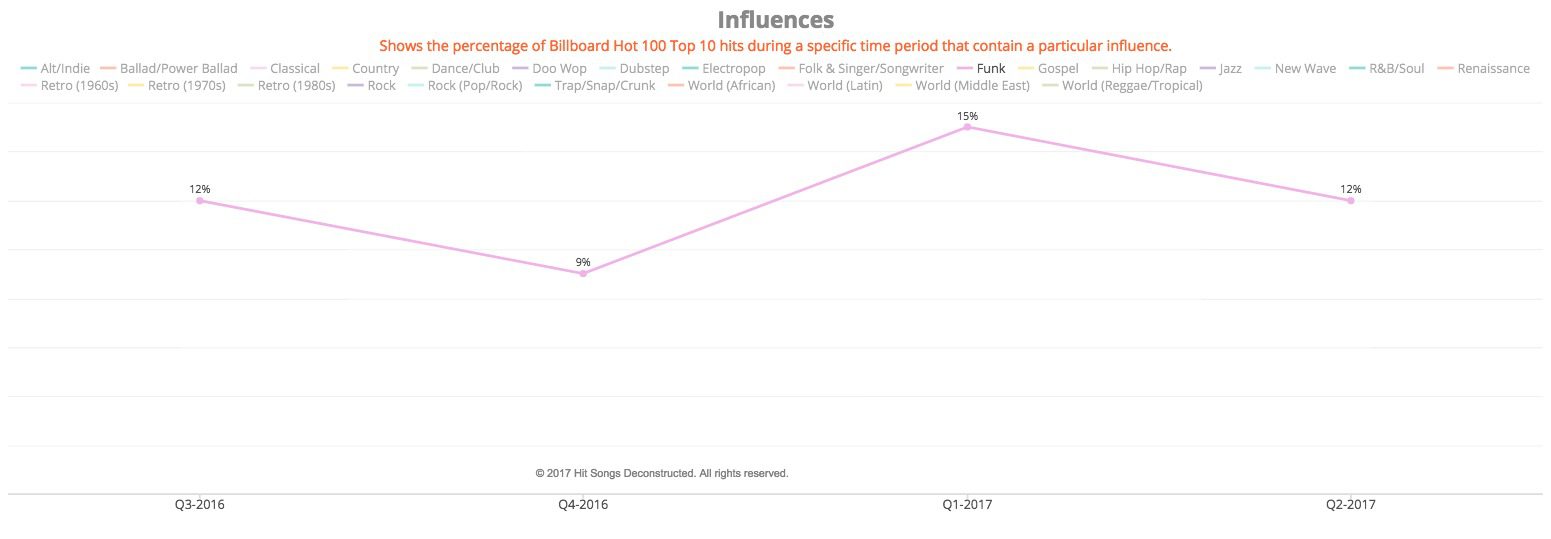


The instrumental break post chorus was not a common section in Top 10 hits in Q2-2017. The only other song to include this section was Country crossover Body Like A Back Road, which only contains one (Stay contains two).
Vocoder, marching snare, and the tick of a clock, which are used to great effect in Stay, are quite rare in the Top 10 of the Hot 100. Two of the most notable recent and semi-recent hits that feature vocoder are Starboy (The Weeknd featuring Daft Punk), and Get Lucky (Daft Punk, Pharrell Williams, Nile Rodgers). A clock tick was featured in Justin Beiber’s What Do You Mean, and no recent Top 10 hits utilize a marching snare drum.
The Ab augmented chord found in the instrumental breaks, second pre-chorus, and third chorus is an extremely rare chord type to find not only in the Top 10, but anywhere in mainstream music. It’s more prevalent in Jazz and Funk music.
The chorus vocals in Stay are more rhythmically fragmented than is commonly found in Top 10 hits. This provides the chorus, and the song, with a unique standout quality in relation to many of its mainstream contemporaries.
While the use of sung and spoken vocal samples in the Top 10 is commonplace, hummed vocals are not. The hummed vocal sample featured in select sections throughout the song both accentuates the impact of the narrative and provides Stay with a unique quality compared to many of its mainstream contemporaries.




